What comes to mind when I say “Washington, D.C.”?
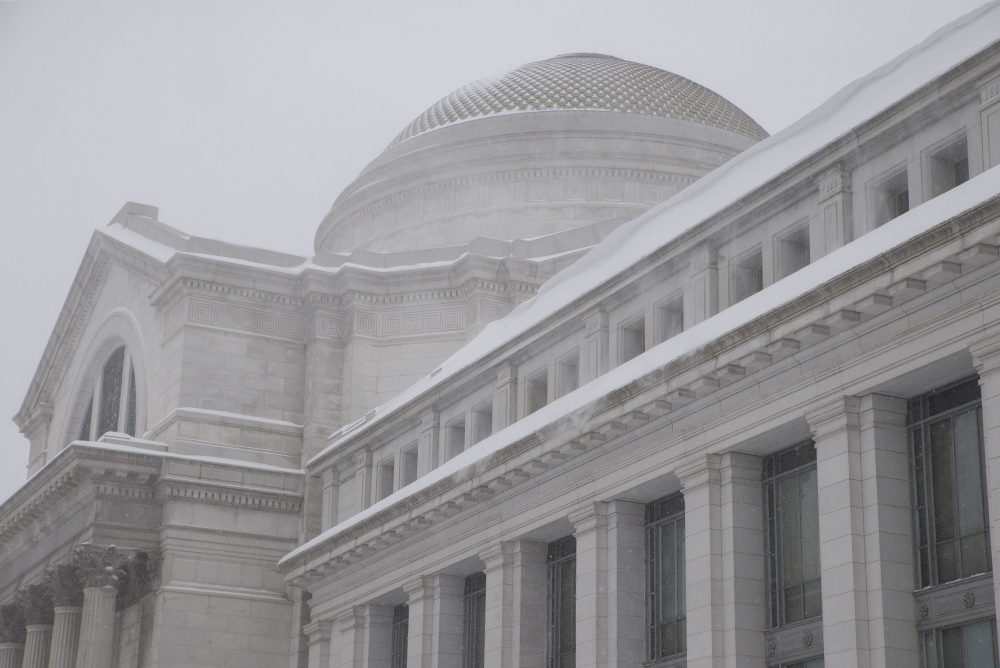
Aside from politically-charged phrases like “gridlock” and “senatorial quagmire,” I imagine it’s, like me, landmarks like the U.S. Capitol, White House and Washington Memorial.
These architectural icons symbolize the beating heart of the Free World. When I moved to D.C., to which I am obligated, as a native Seattleite, to refer as the “Other Washington,” I thought of the photographic opportunities that abound in this historic city. The city is old, a thrilling prospect for someone from the Pacific Northwest. In the gold rush of the mid 1800’s, Seattle was just a newborn baby while D.C. already had a master’s degree in political science and was settled down with a good career. Any structure near Seattle built prior to 1900 is reason enough to throw the kids in the Subaru Outback for a weekend pilgrimage. In DC, throw a metro card and you’ll likely hit a stone wall built over a century ago.
The antiquity is a draw: Over 21 million tourists traveled here in 2015. Quickly scan Flickr and you’ll find that few buildings escape detection—folders bulging with images of white marble domes and columns. But how can I find a unique way to photograph these structures? Didn’t matter. The U.S. Capitol building had been under restoration for several years so the smooth silhouette of its dome was smothered by scaffolding.
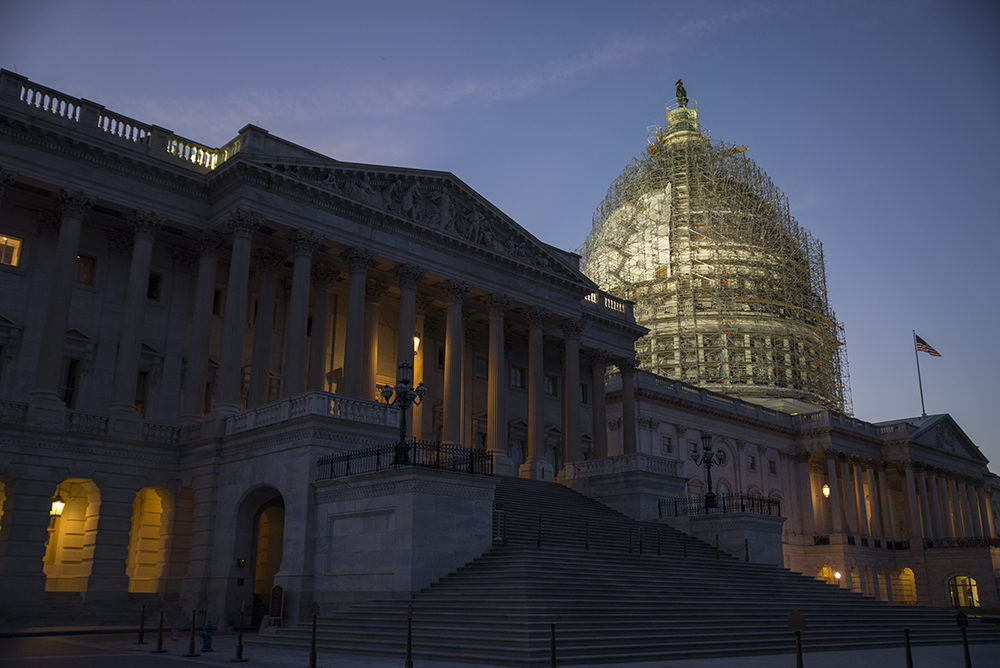
What else could I photograph in DC?
Ever since seeing the fu dogs that guard entrances of East Asian temples, I’ve had a thing for stone lions. I knew there was at least one pair of lions in front of Union Station, made famous in the time-lapse intro to the Netflix series “House of Cards.” I saw them for the first time on an open-top bus tour in July. Within minutes, I saw another pair not two blocks away. Made of sandstone and clearly inspired by Egyptian art, these lions stood in stark contrast to the lifelike, marble constructions up the street. How many types of lions I could find throughout the city?
Twelve, it turns out. Over several months, I explored the city by foot, bike and bus, through the debilitating heat of summer and the shin-deep snow of winter. The statues spanned a variety of placements, sizes, themes and materials, in every corner of the district. As a bonus, the photographic adventure fit nicely into my love of series, whether it be birds on statues, the ceilings of places of worship, the bridges of Paris, or the cars of Cuba.
If Wall Street has wolves and Capistrano has salmon, why can’t D.C. have lions?
Columbus Fountain
Built in 1912 to commemorate Christopher Columbus, who is flanked by an American Indian to the left (facing west) to represent the New World and an elderly gentleman on the right to represent the Old World. Congress approved the $100,000 needed to build the fountain in 1906. (Source)
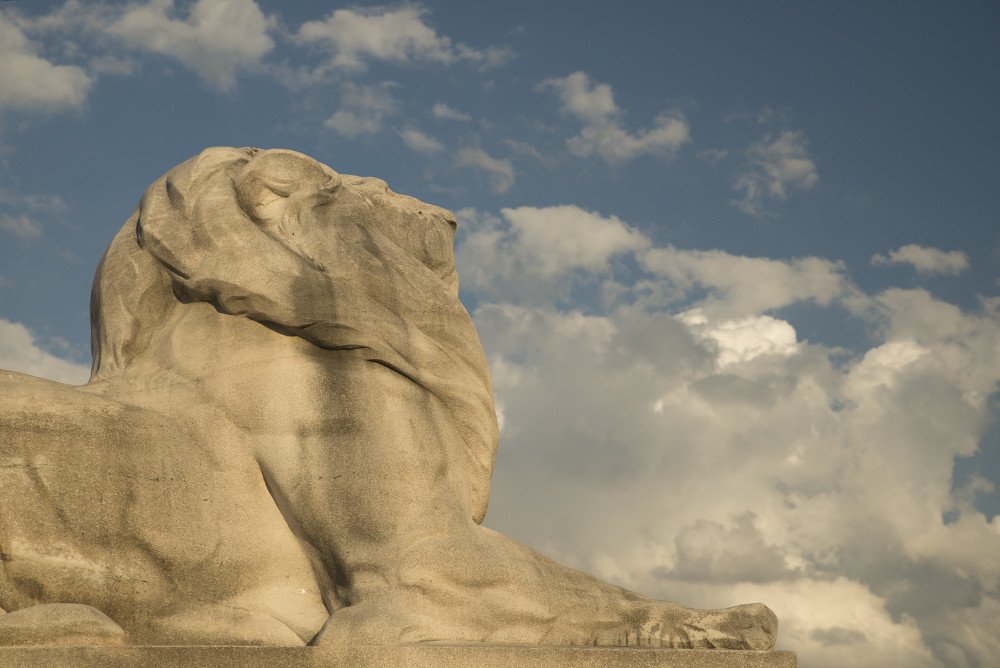
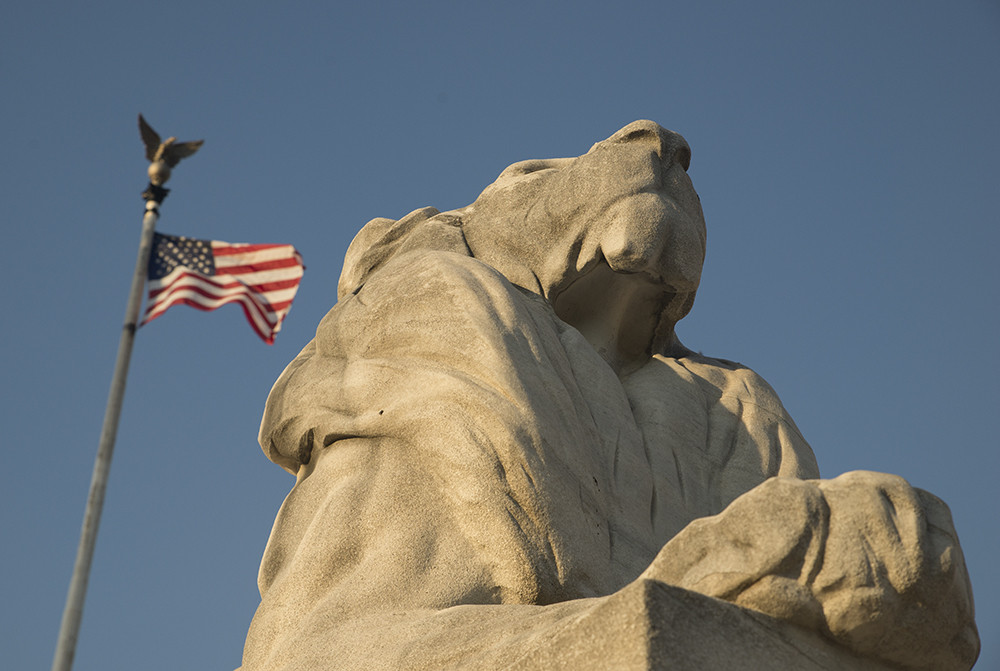
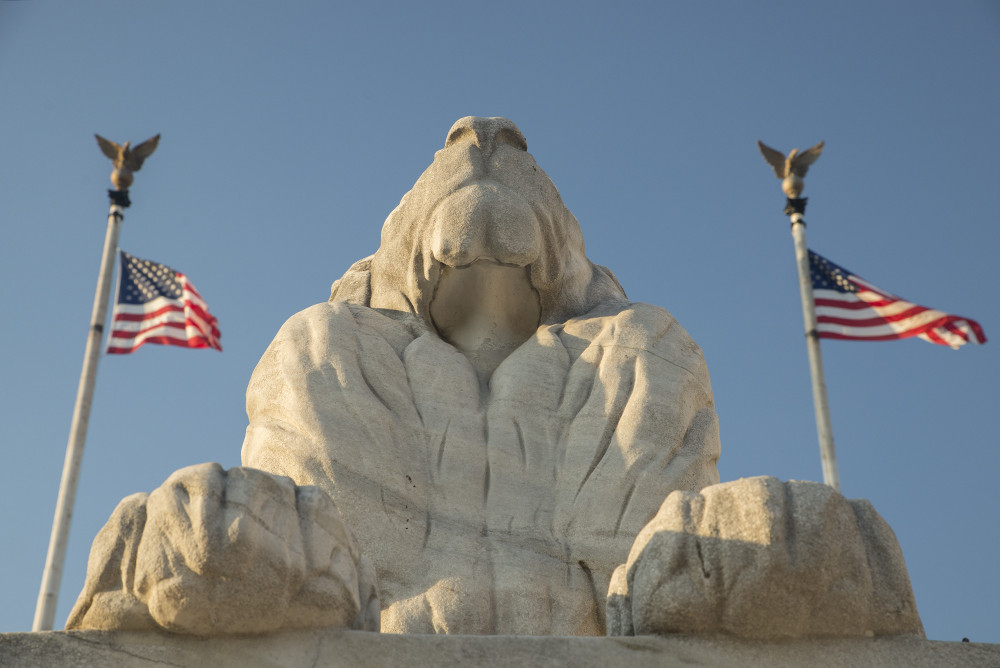
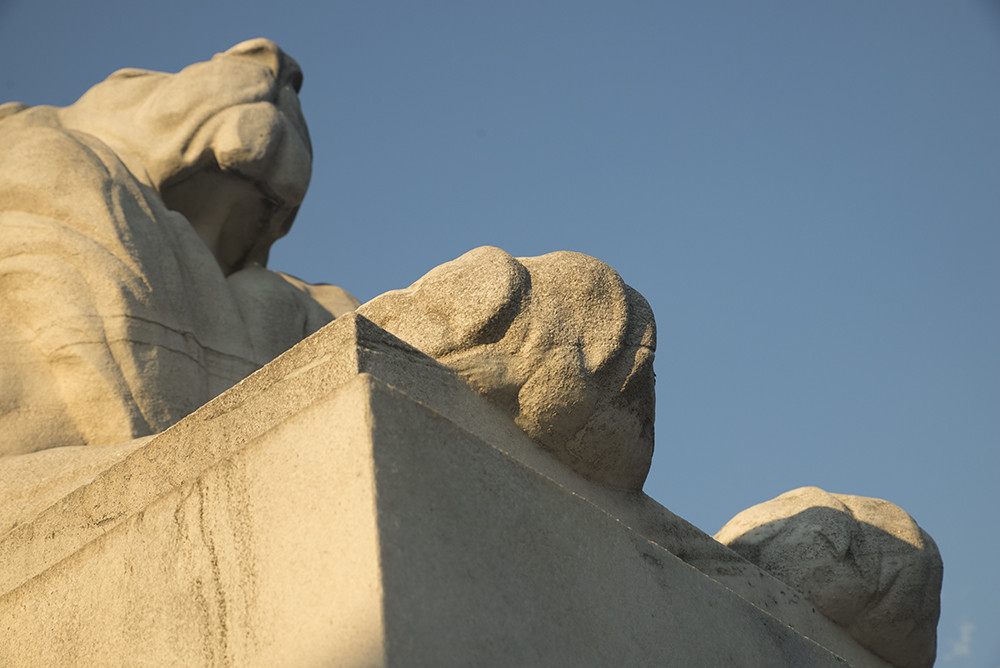
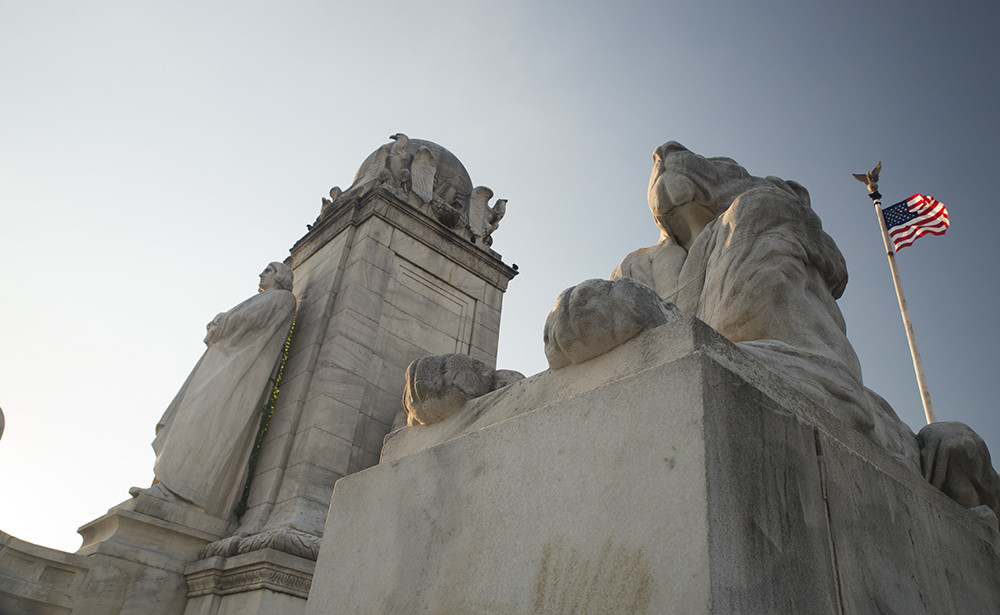
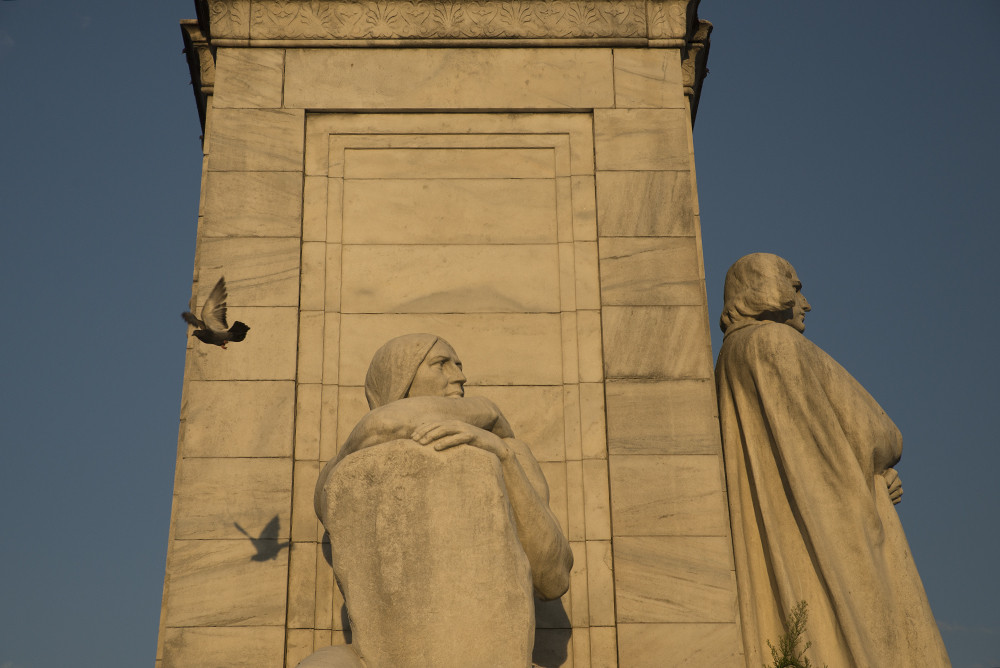
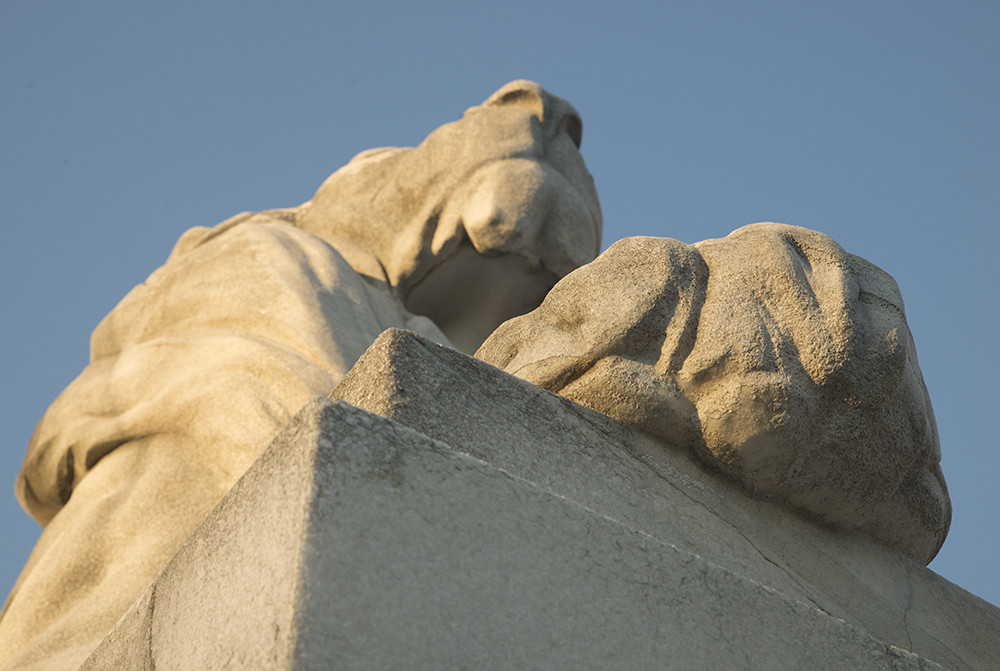
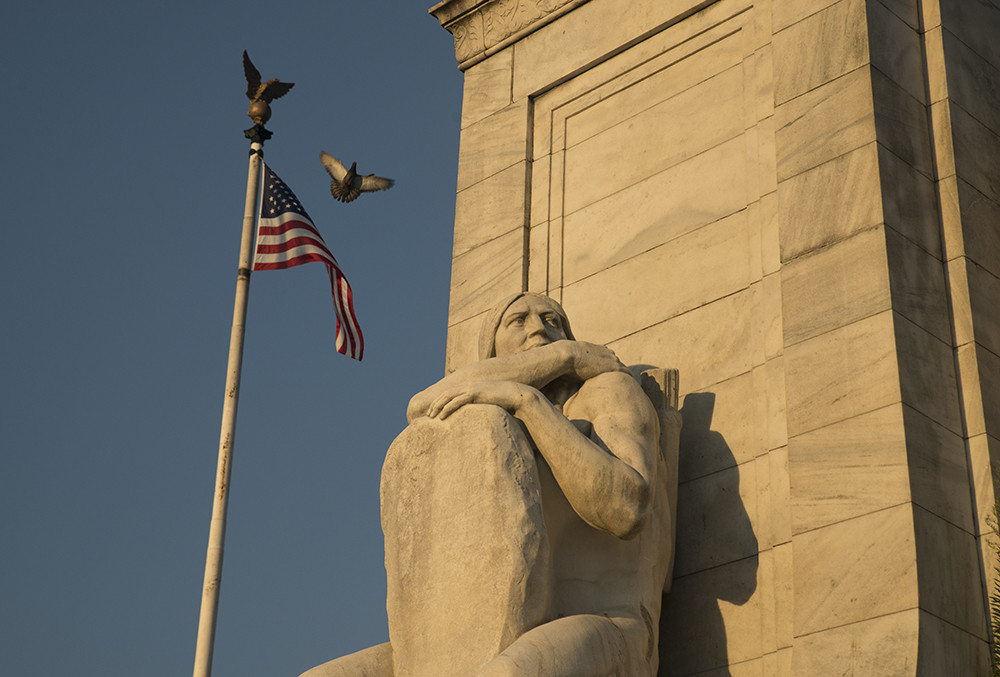
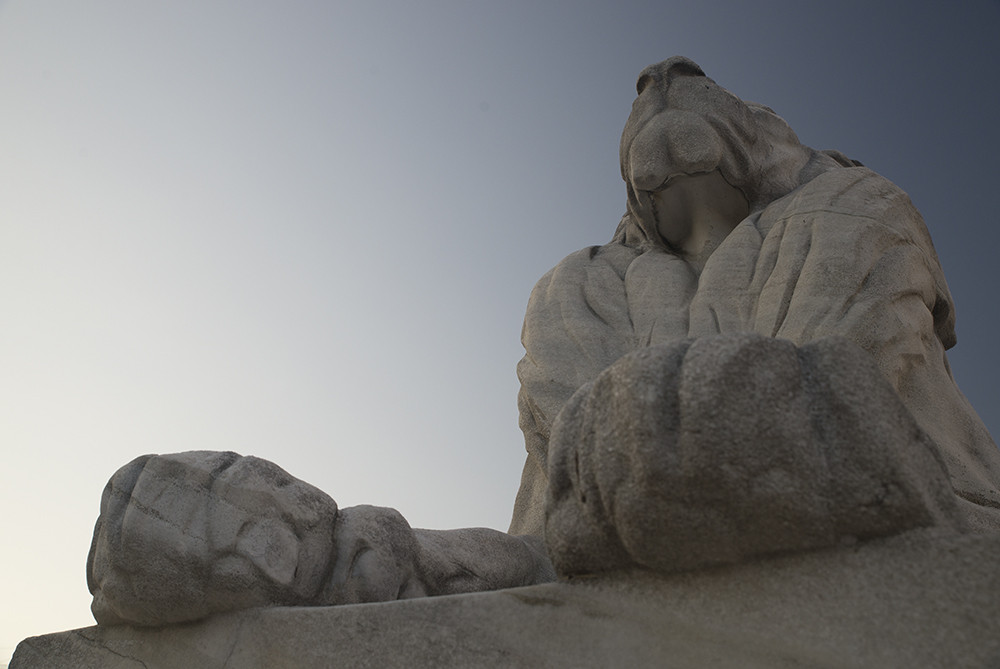
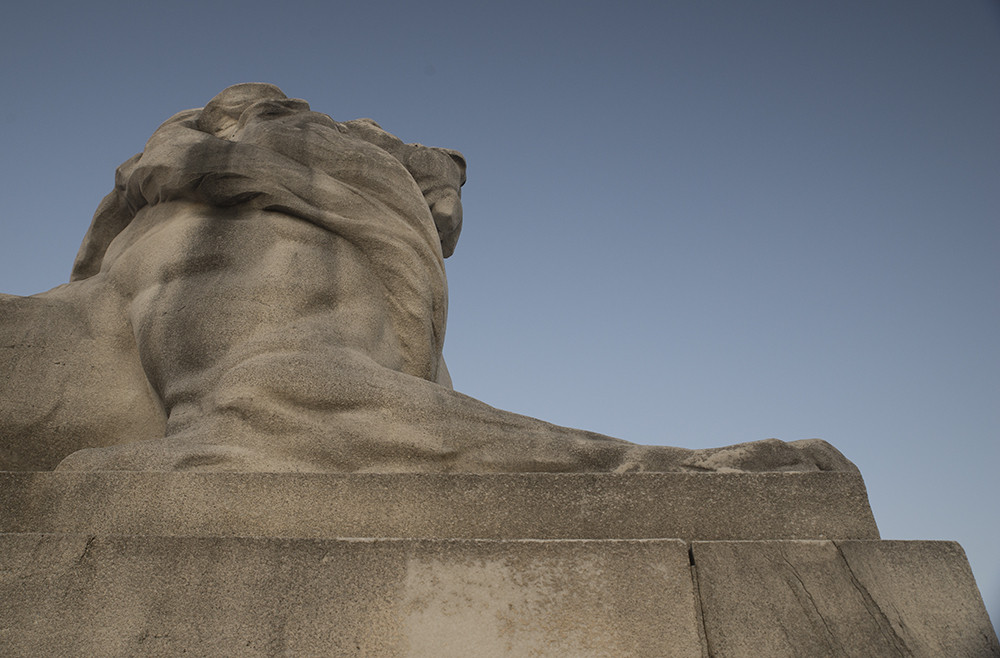
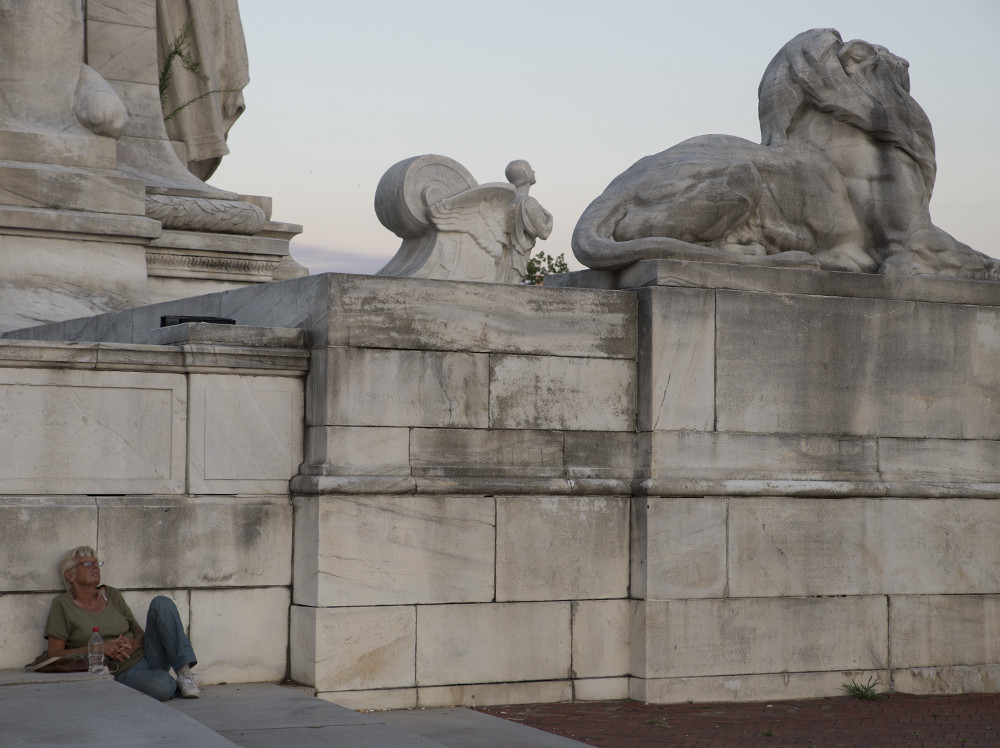
America’s Square
(Jones Day Building), 51 Louisiana Ave
Located just one block from the U.S. capitol building, America’s Square (or the Jones Day Building, home to one of the largest law firms in the world) made history in 2014 when it became the most expensive office building in the nation’s capital, changing hands for $500 million—just over $1,000/square foot. (Source)
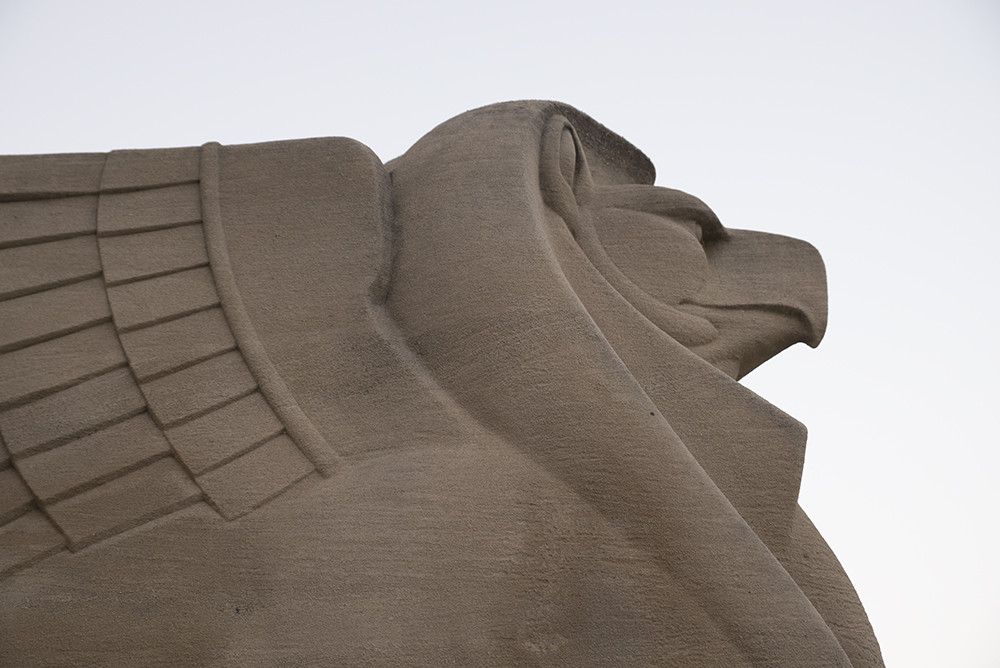
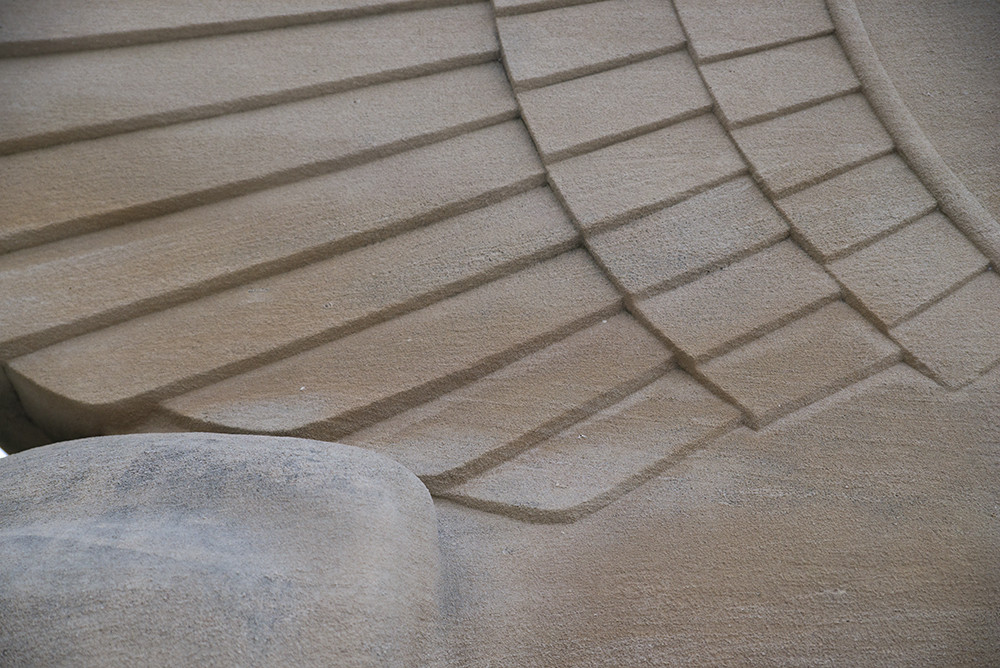
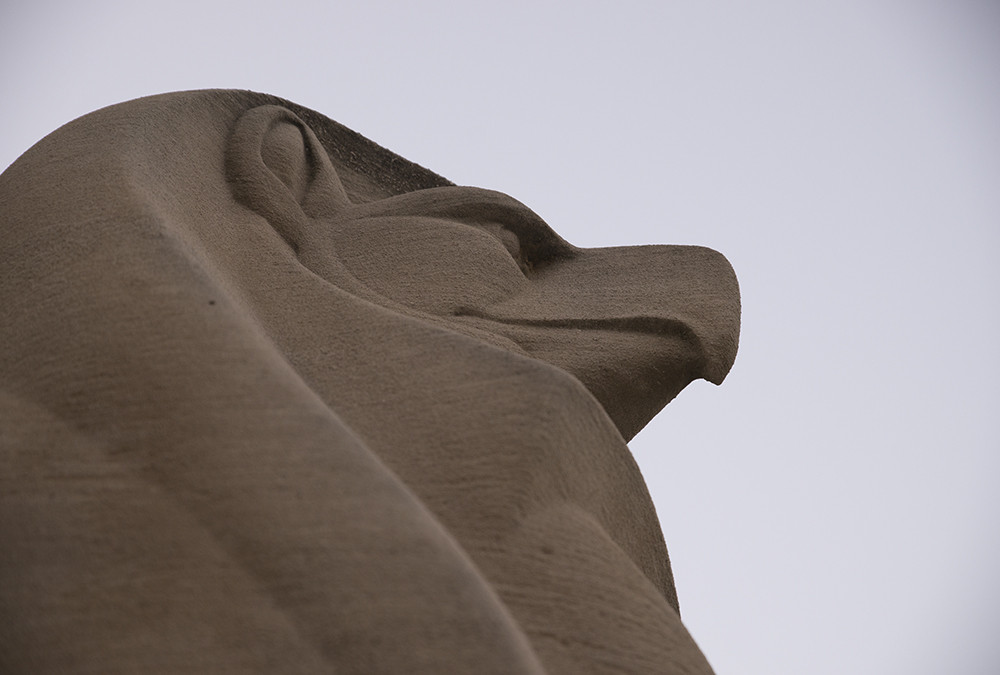
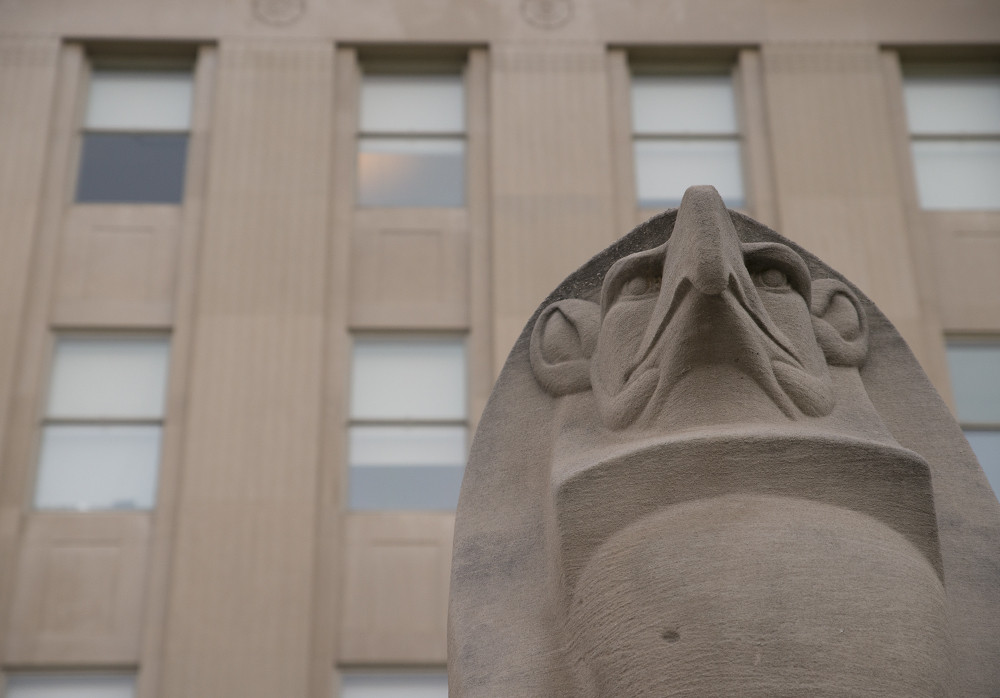
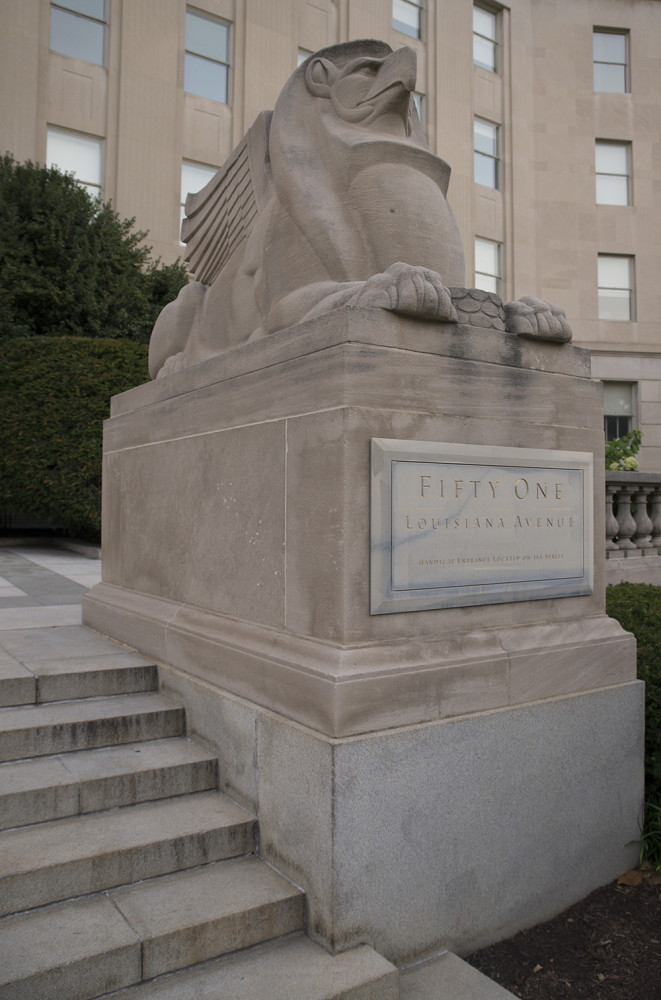
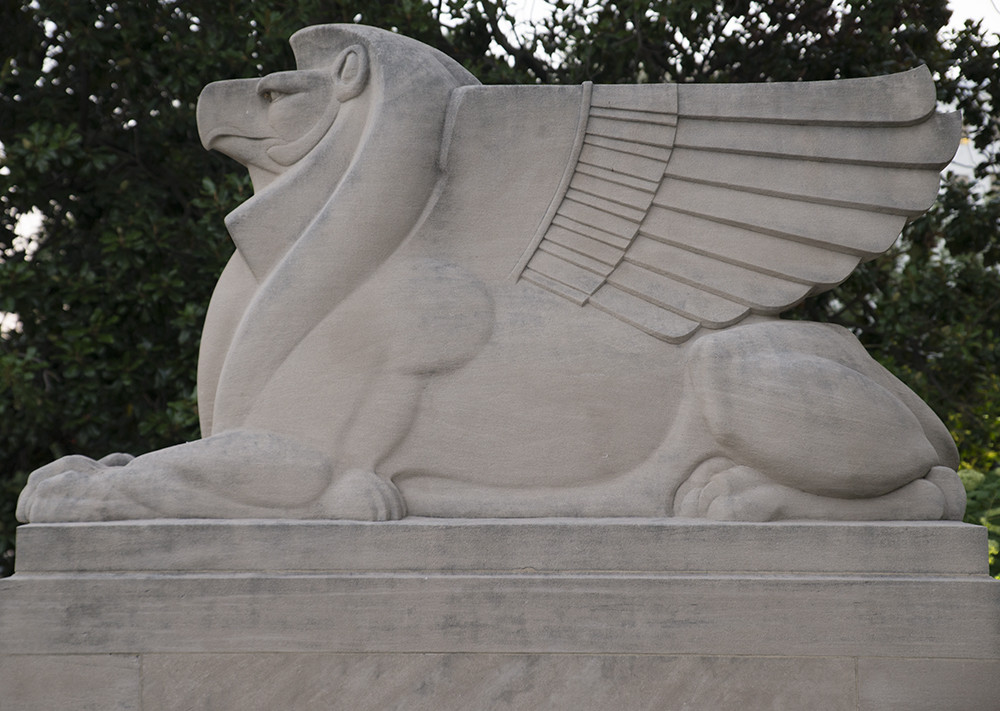
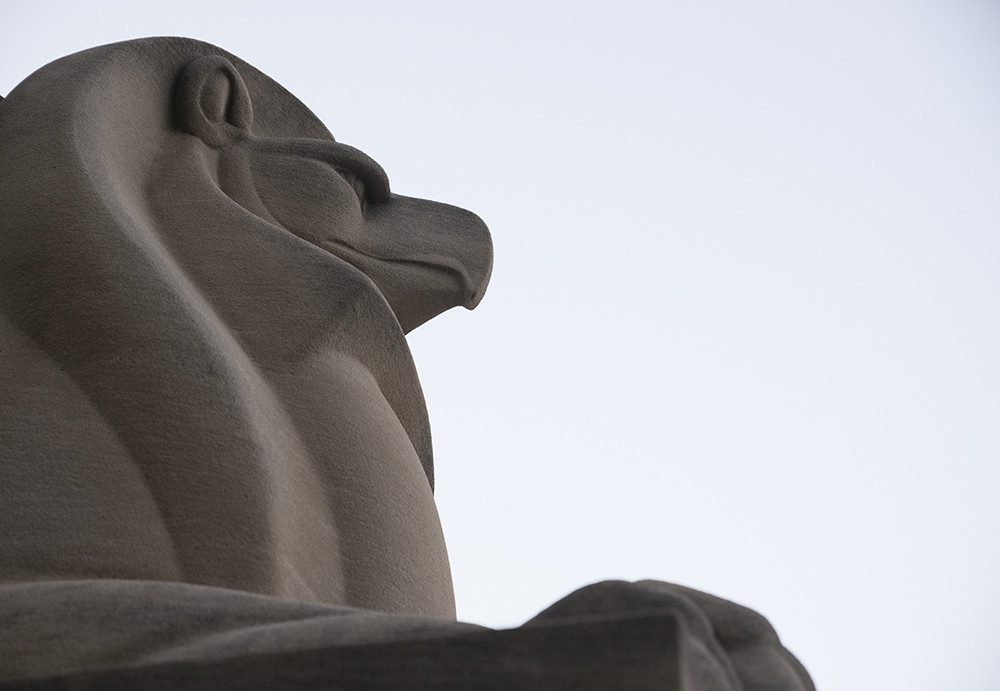
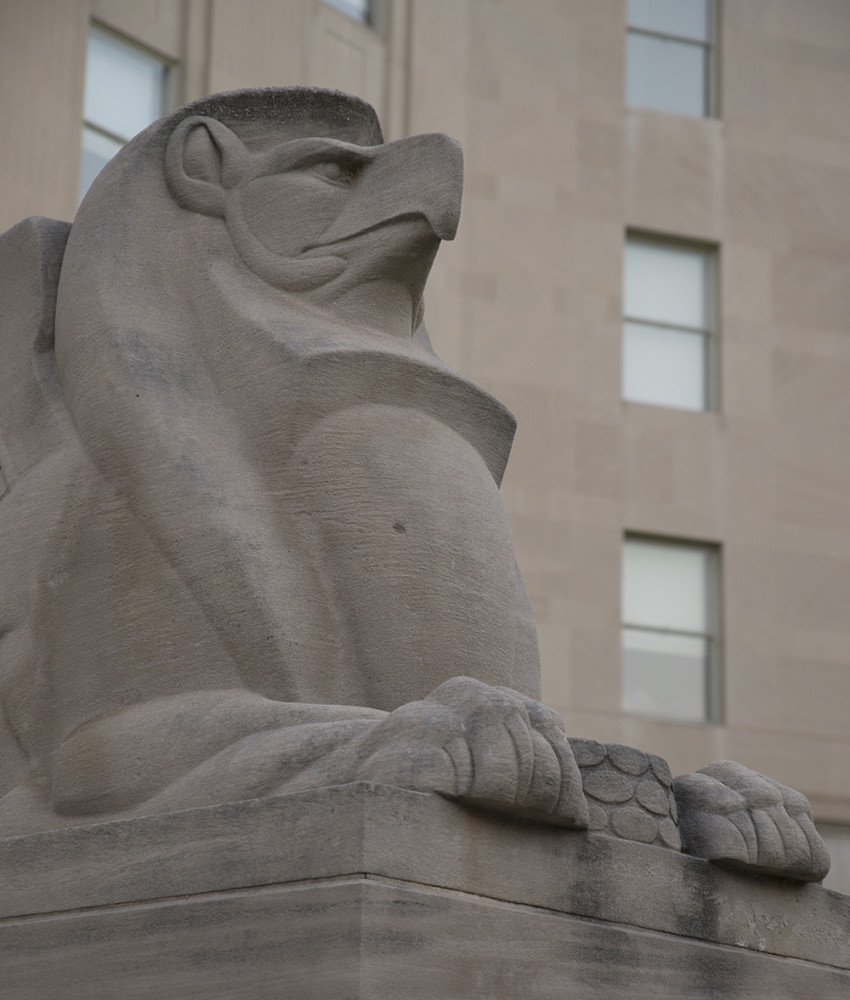
House of the Temple
(Scottish Rite of Freemasonry Center), 16th Street
The two ‘lions’ evoke the sphinxes that lay in front of Soloman’s Temple, representing wisdom (south side) and power (north side). Both were carved by Adolph Alexander Weinman – best known for creating the Mercury Dime and Walking Liberty Half Dollar – out of two pieces of solid limestone weighing 76 tons. The temple was completed in 1915 after four years of construction. Over its distinguished history, it won praise from many contemporary architects; it also hosted the first public library in Washington D.C. (Source and source)
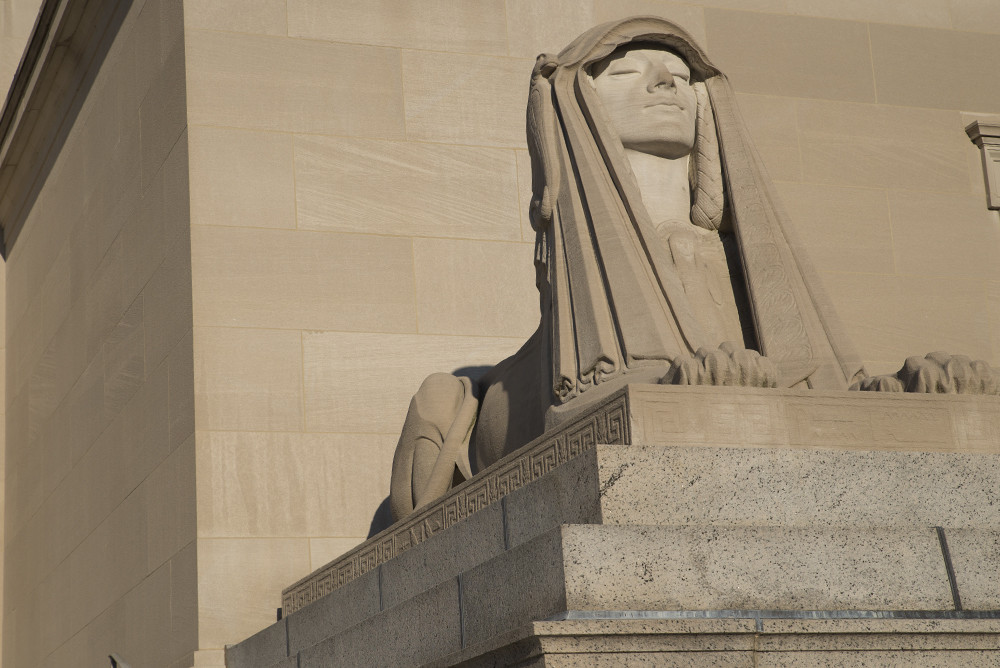
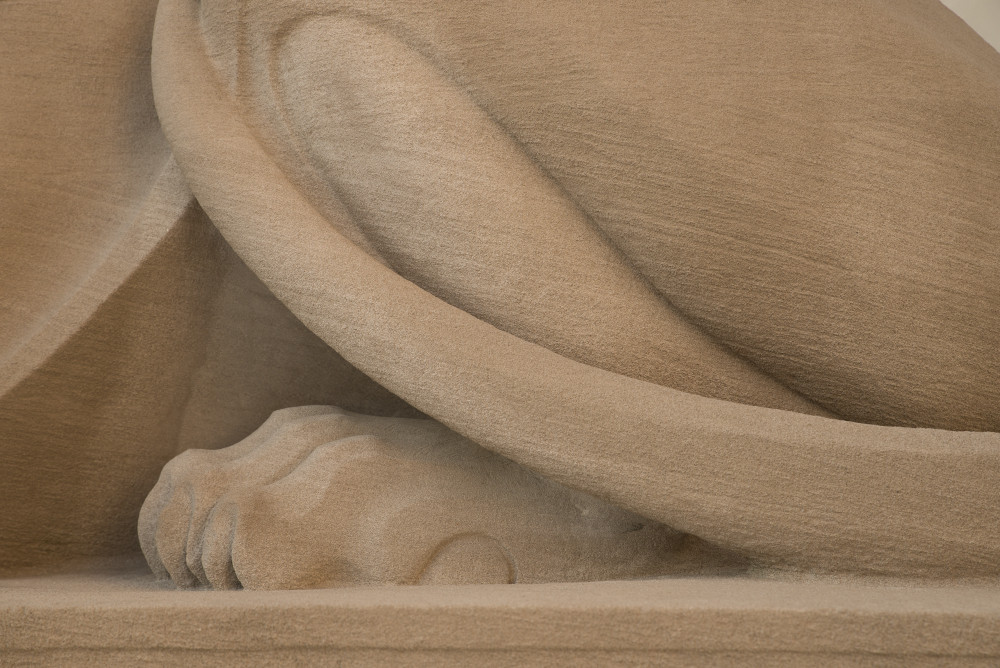
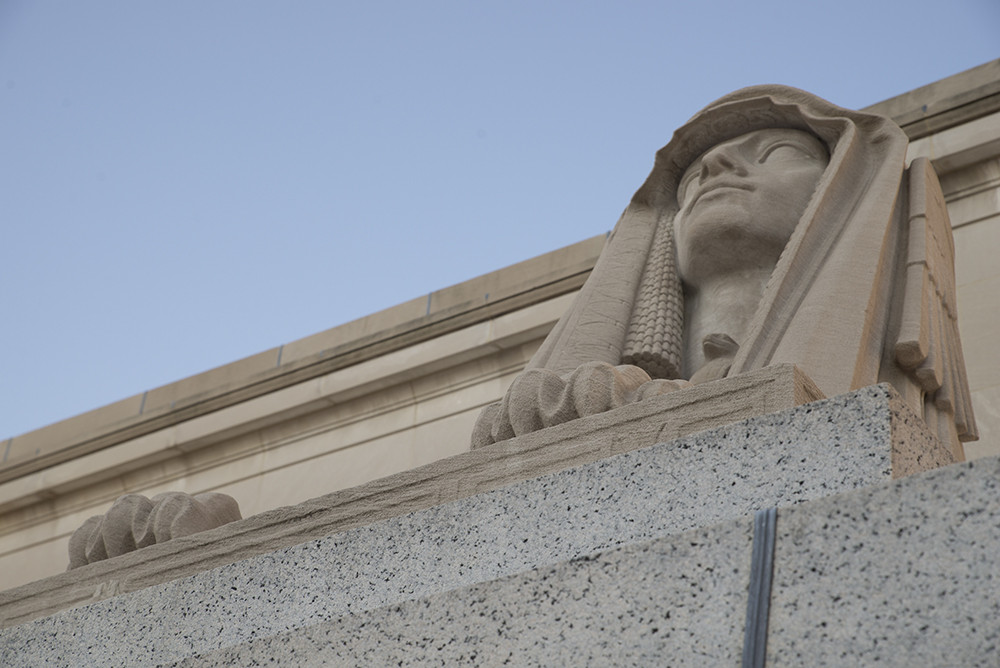

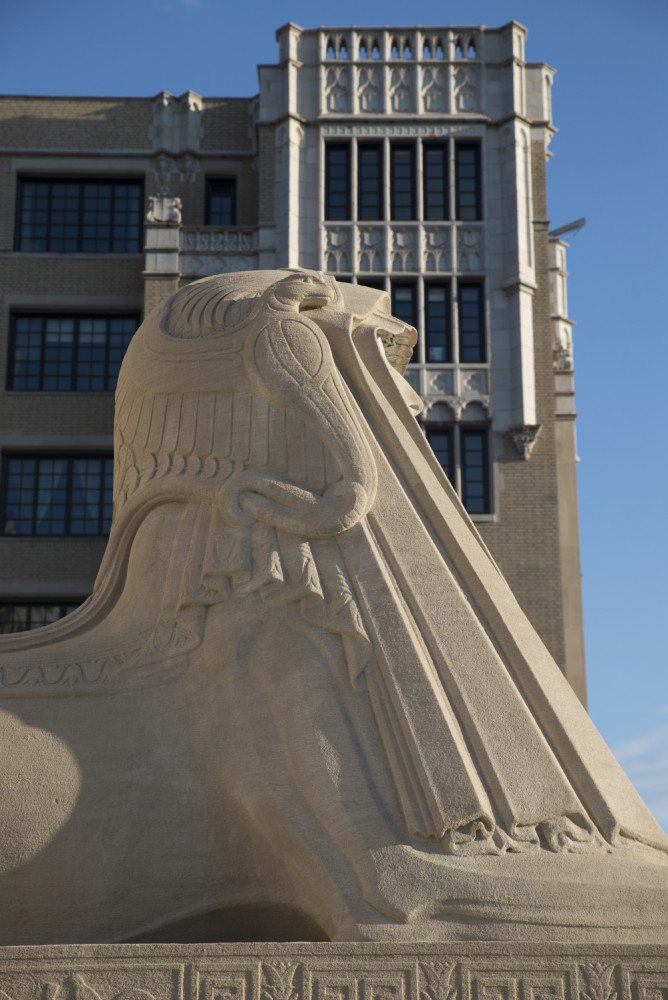
Taft Bridge
When the Taft Bridge was opened in 1907, it was adorned by four male lions, named the “Perry Lions” after the original sculptor, Roland Hinton Perry. Unfortunately, the lions didn’t fare well, and were restored with varying success in 1964 and 1993, before they were recast by Reinaldo Lopez-Carrizo in 2000. The same molds were used to create the bronze lion statues that mark the west entrance of the National Zoo. (Source)
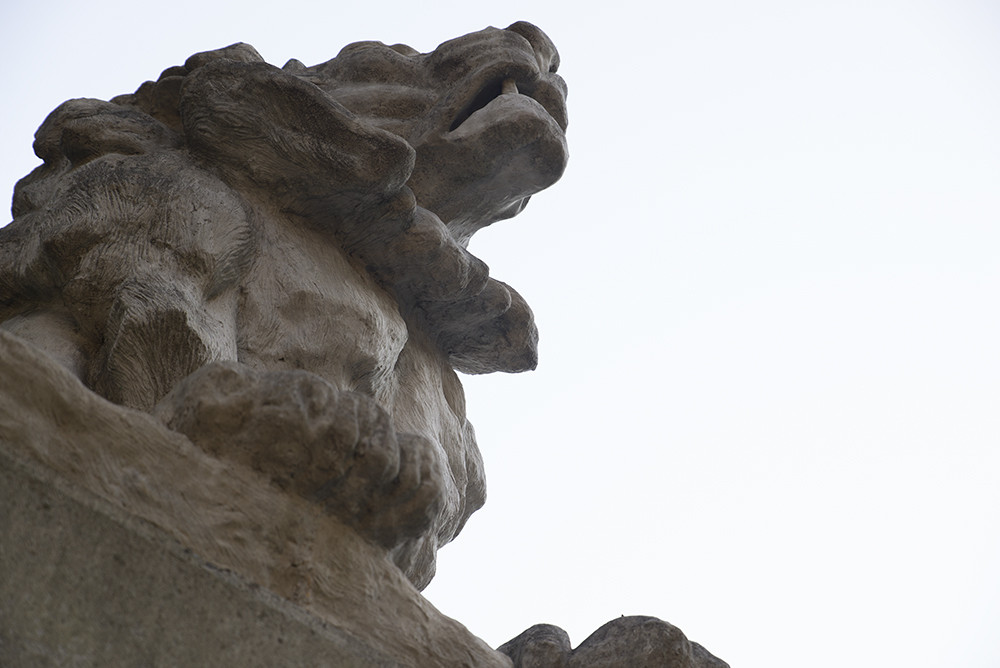
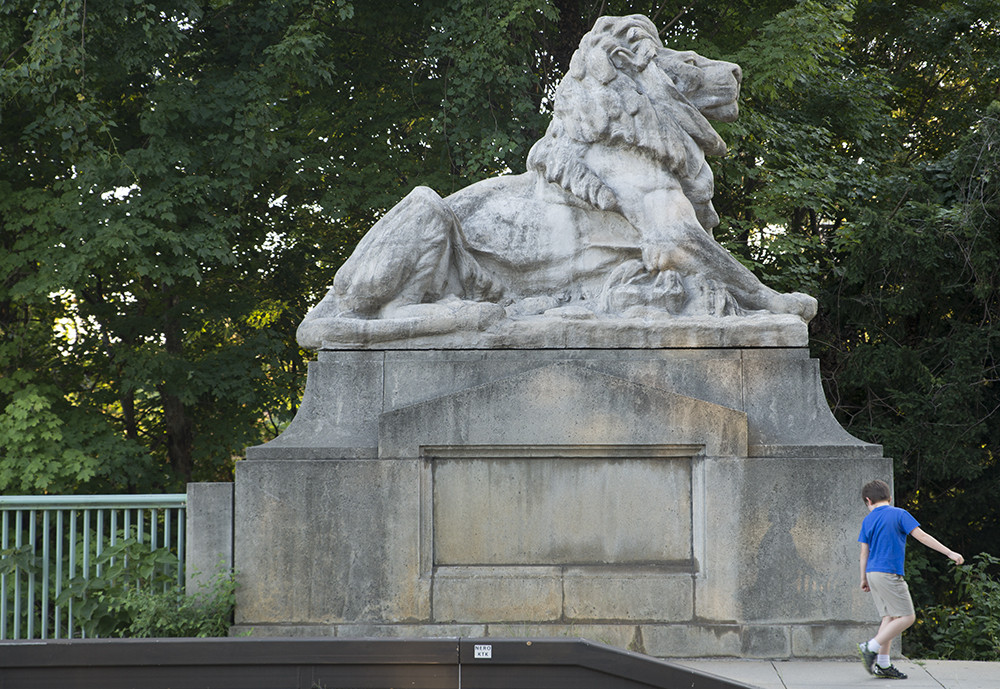
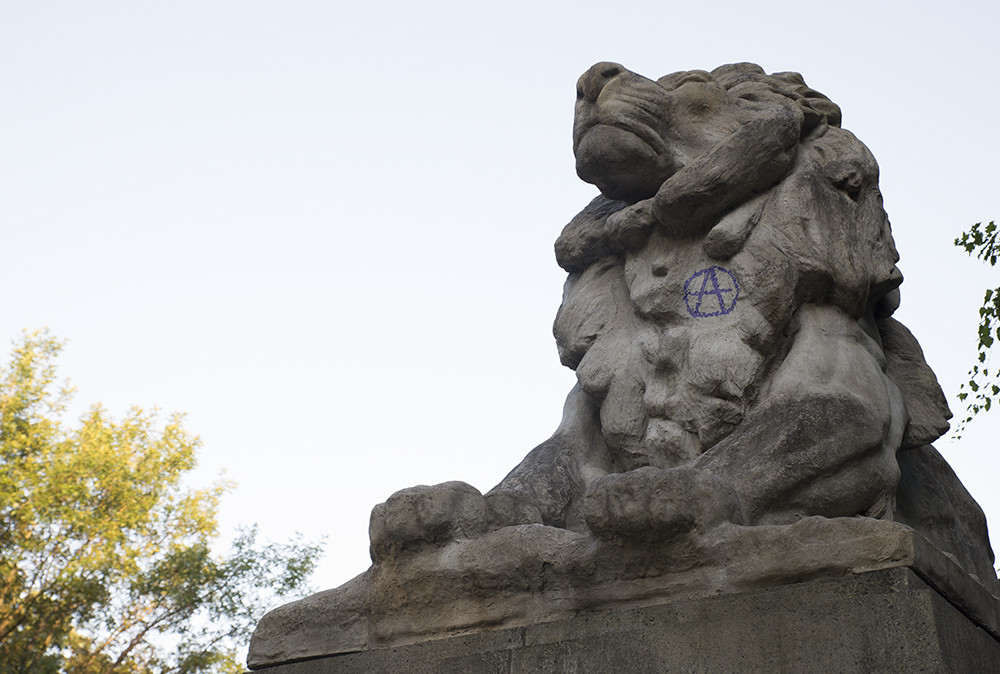
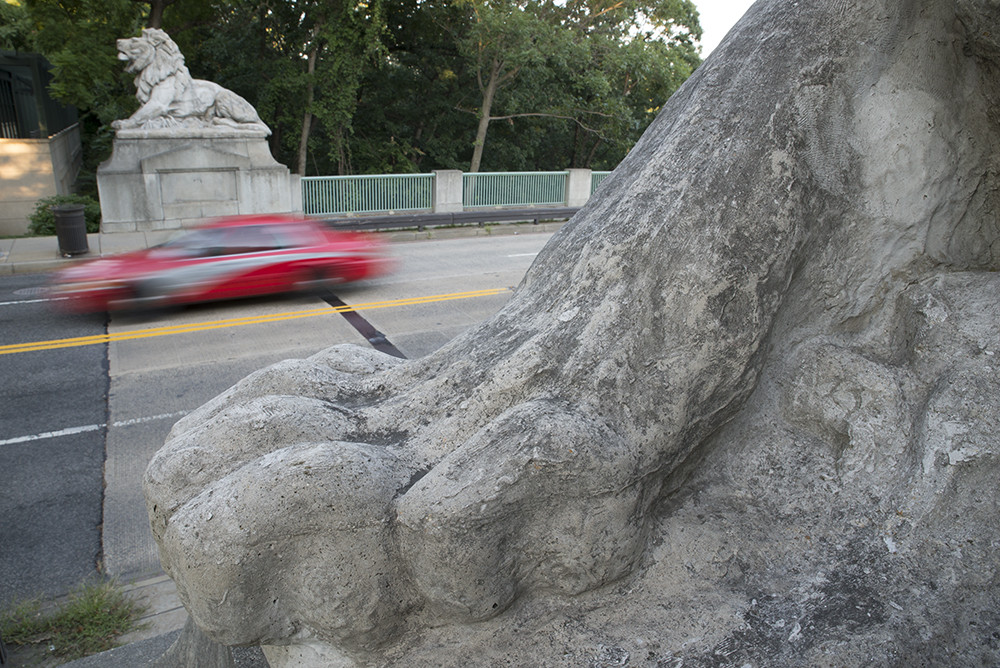
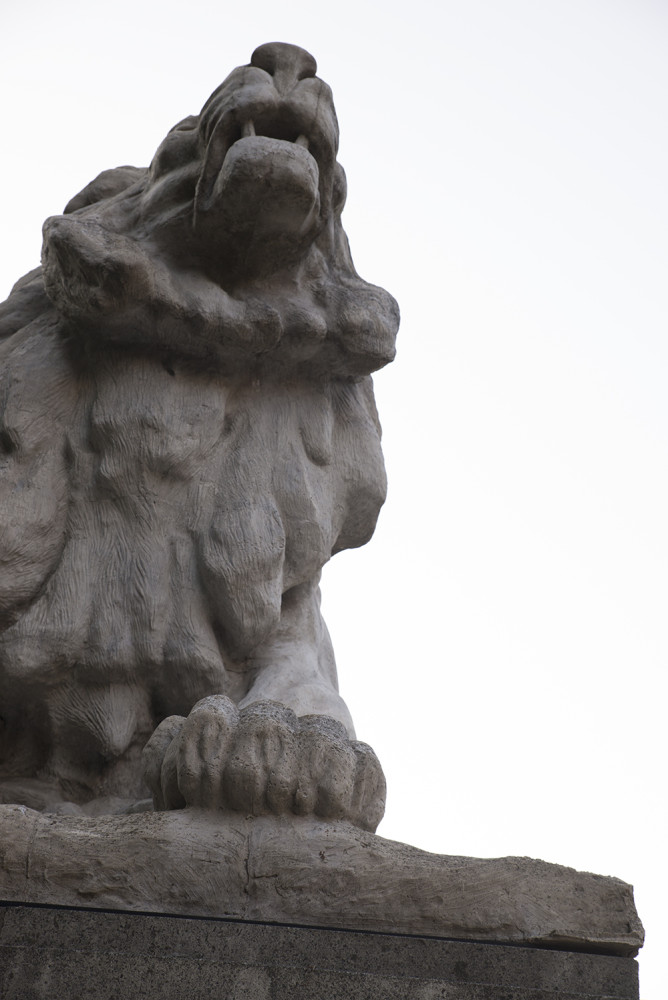
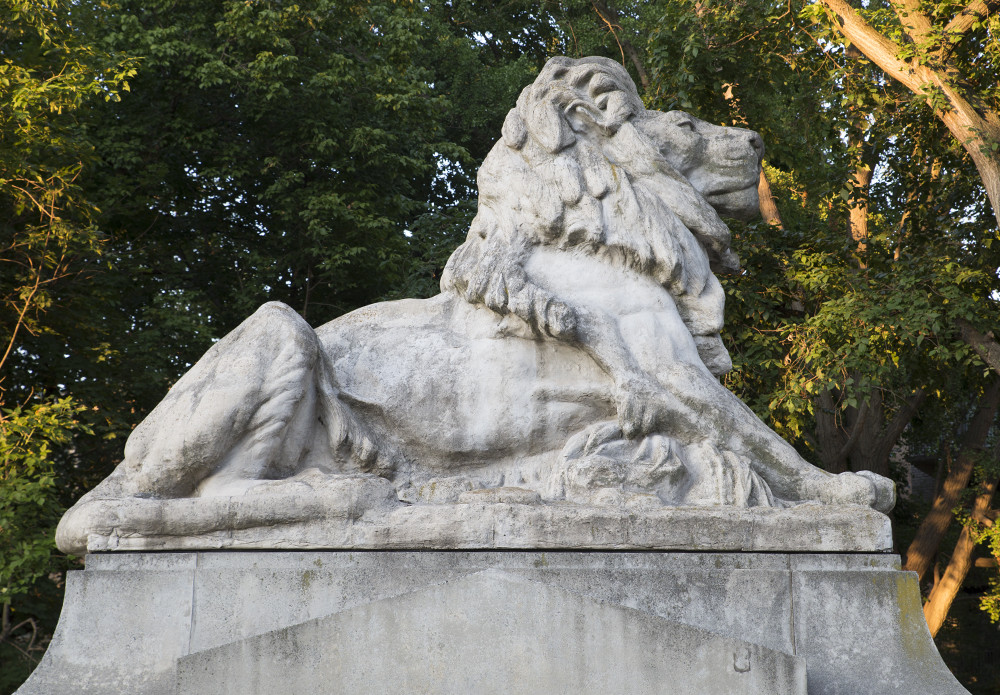
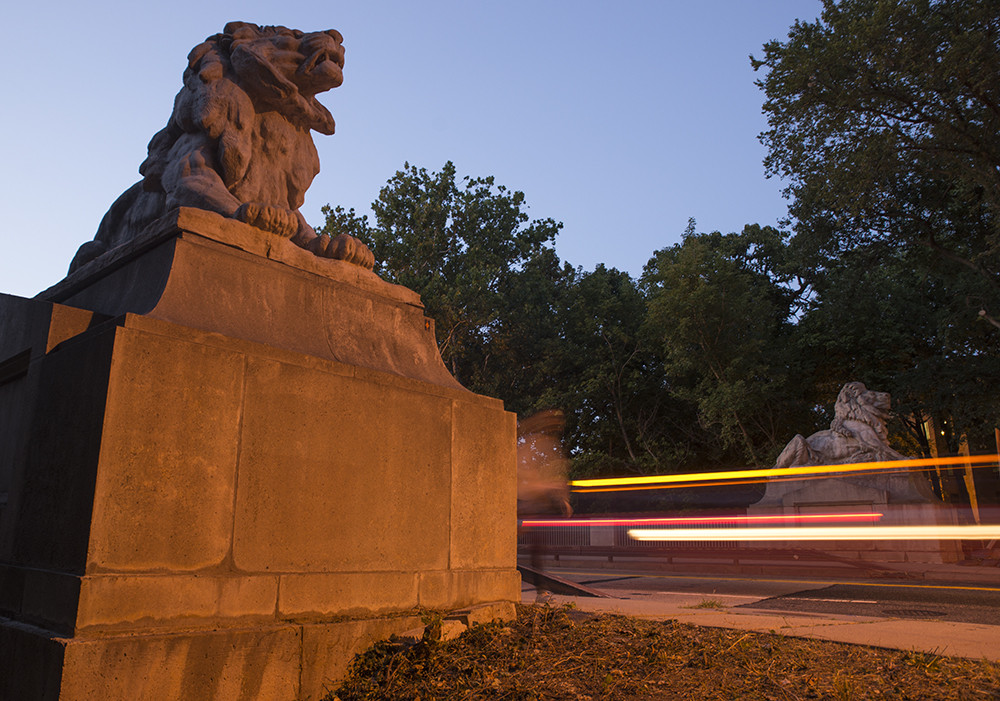
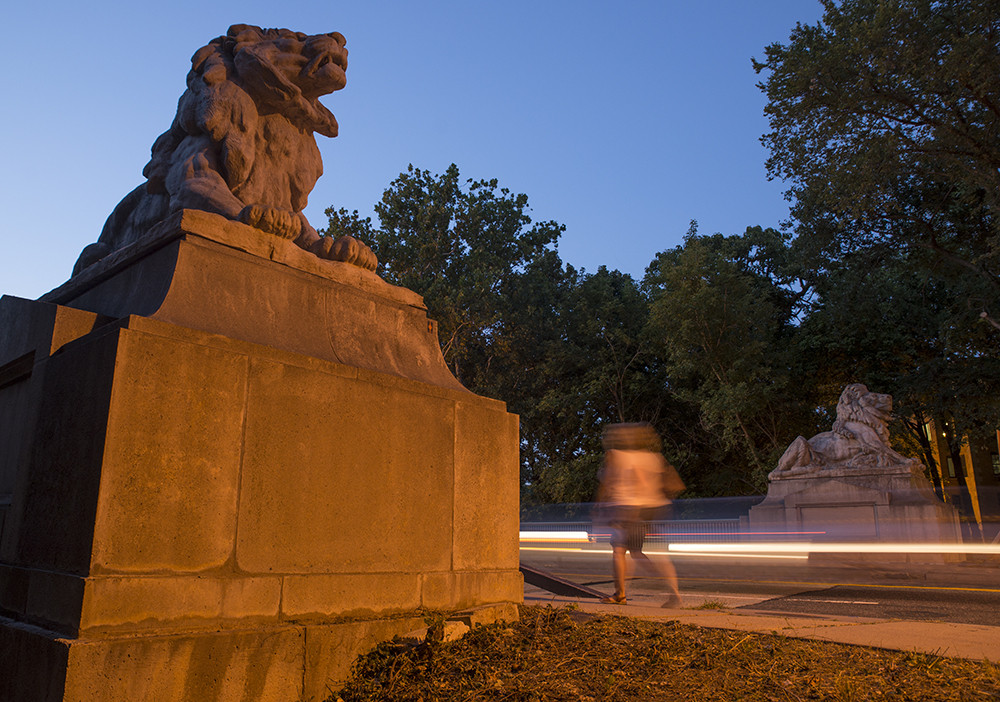
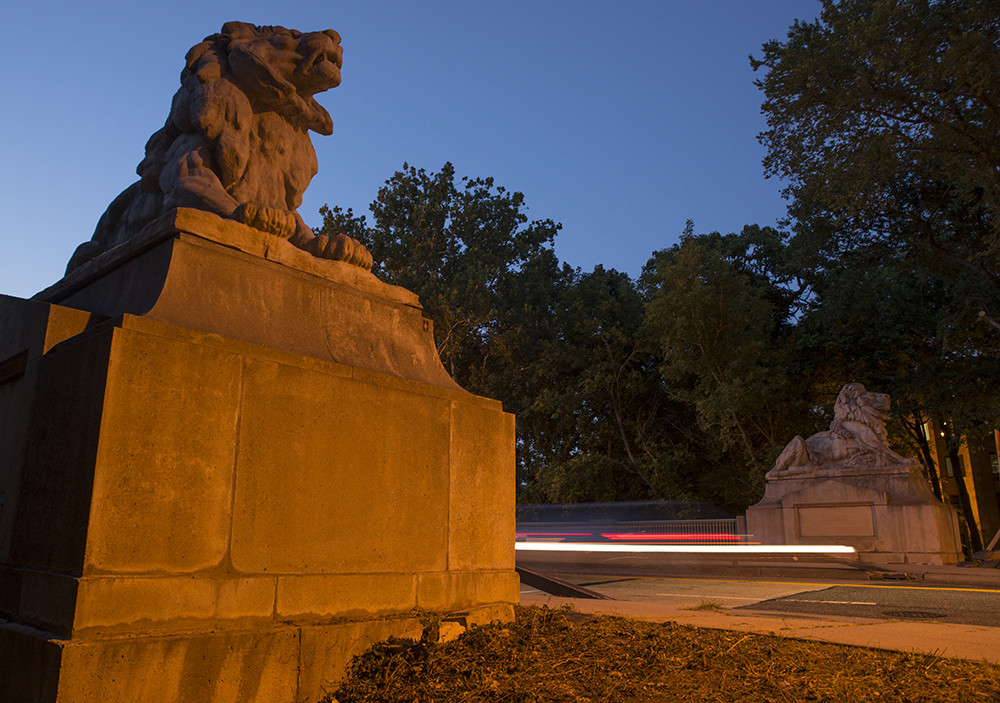
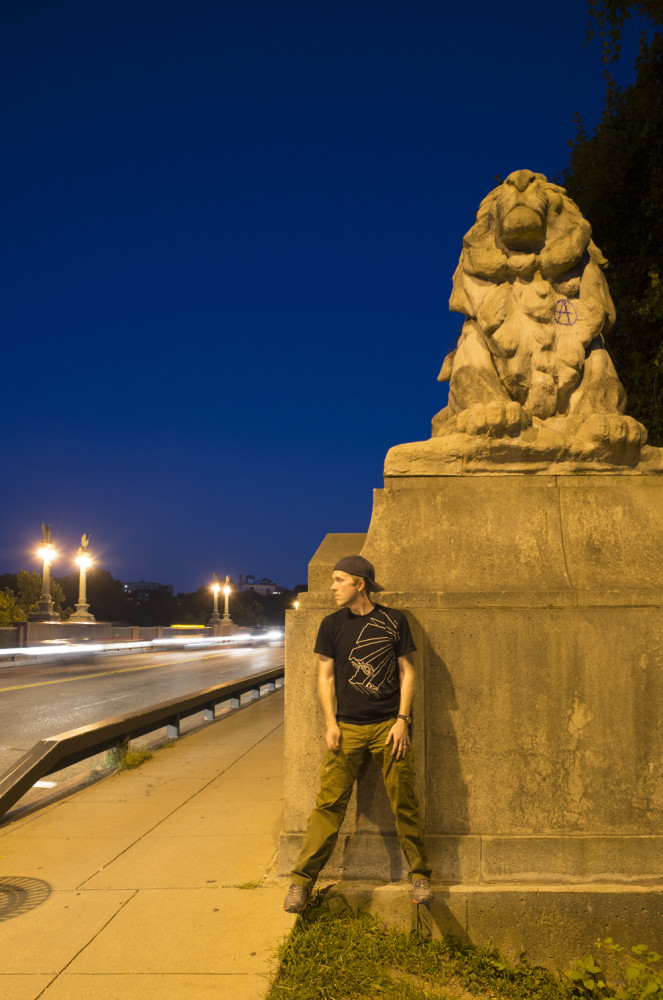
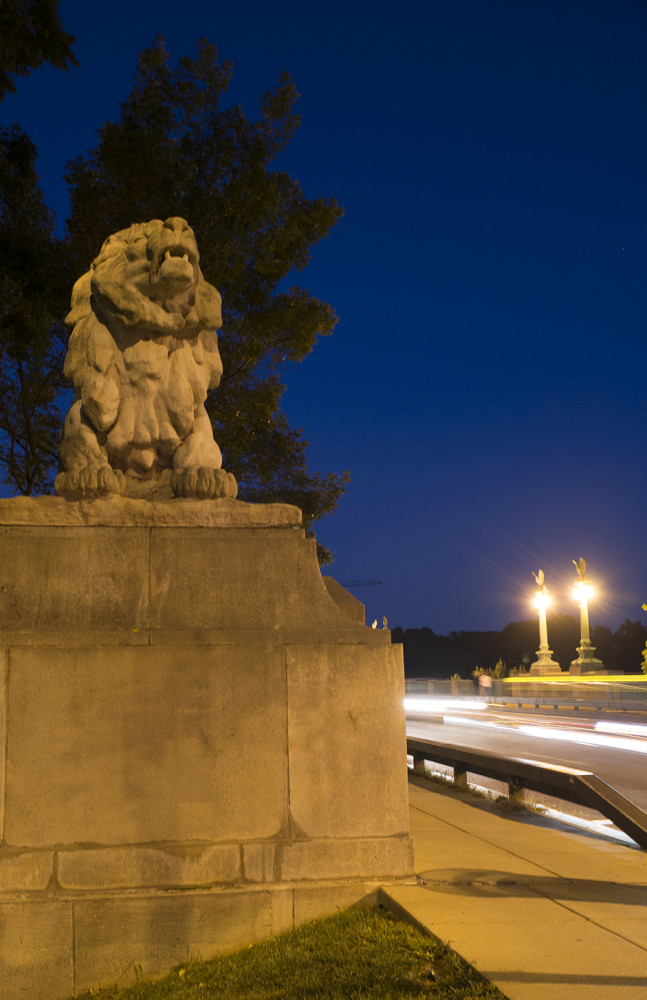
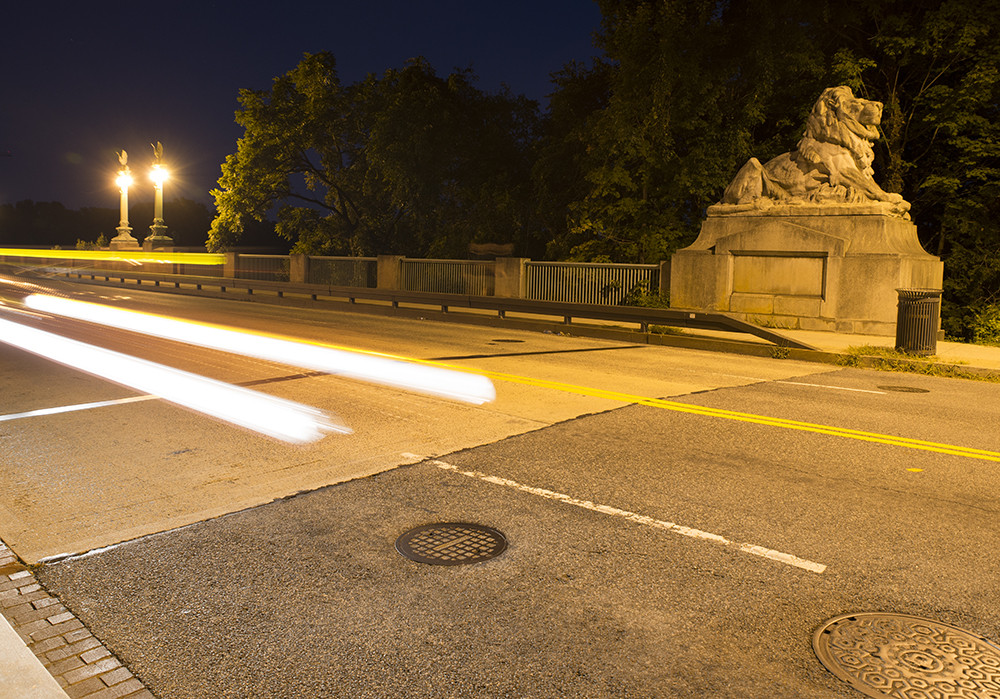
Smithsonian National Zoological Park
(West Entrance)
Look familiar? These bronze casts where made when the Taft Bridge lions that were resurrected in 2000. These lions stand high above the sidewalk – similar to their brethren half-mile down the street – greeting the two million people that visit the National Zoo every year. (Source and source)
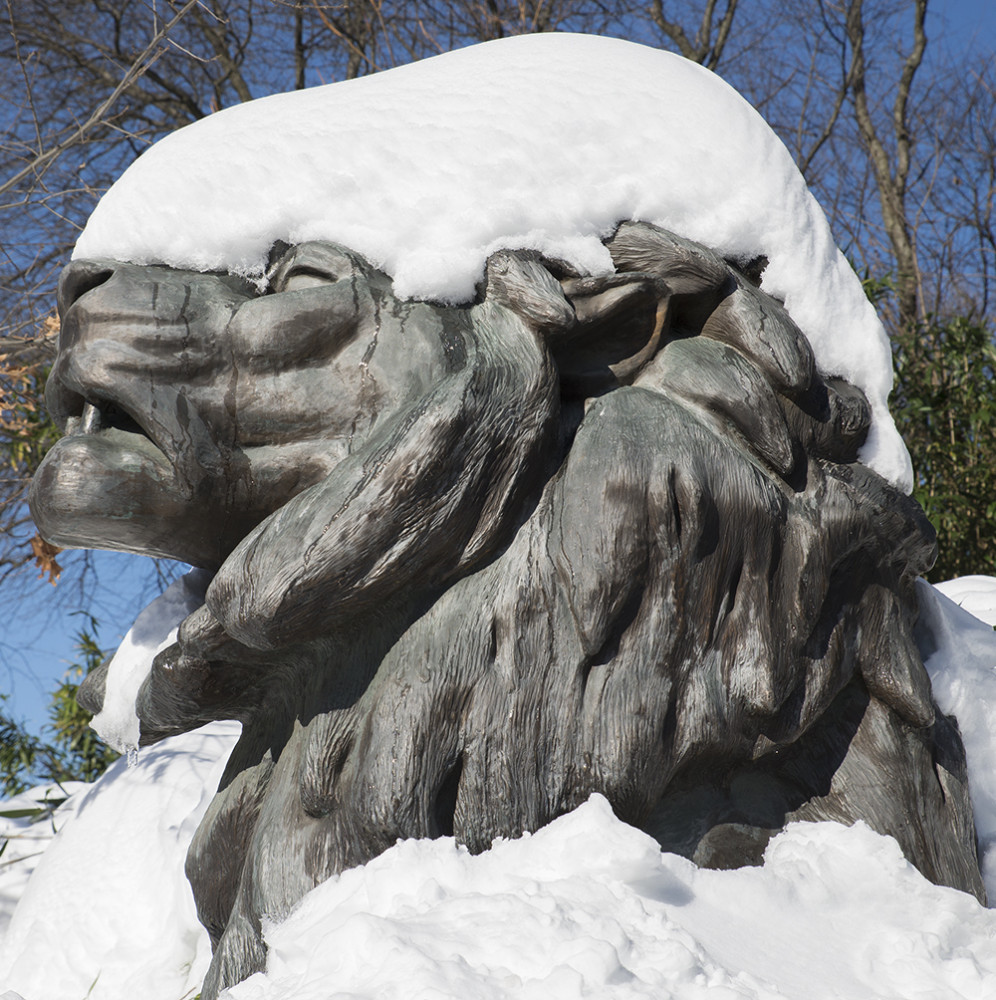
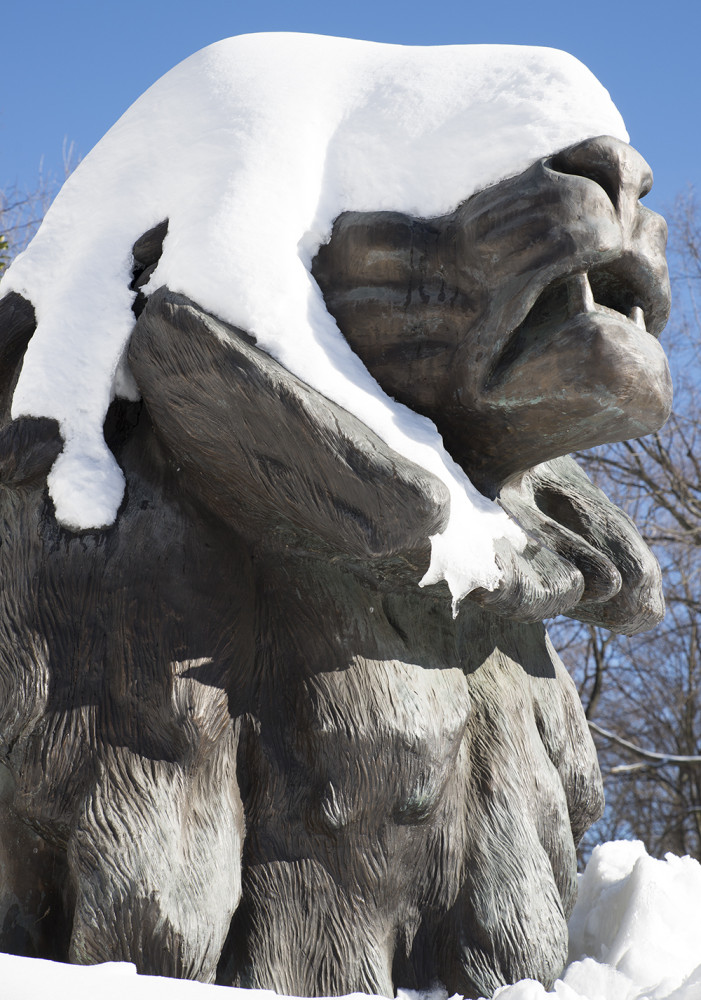

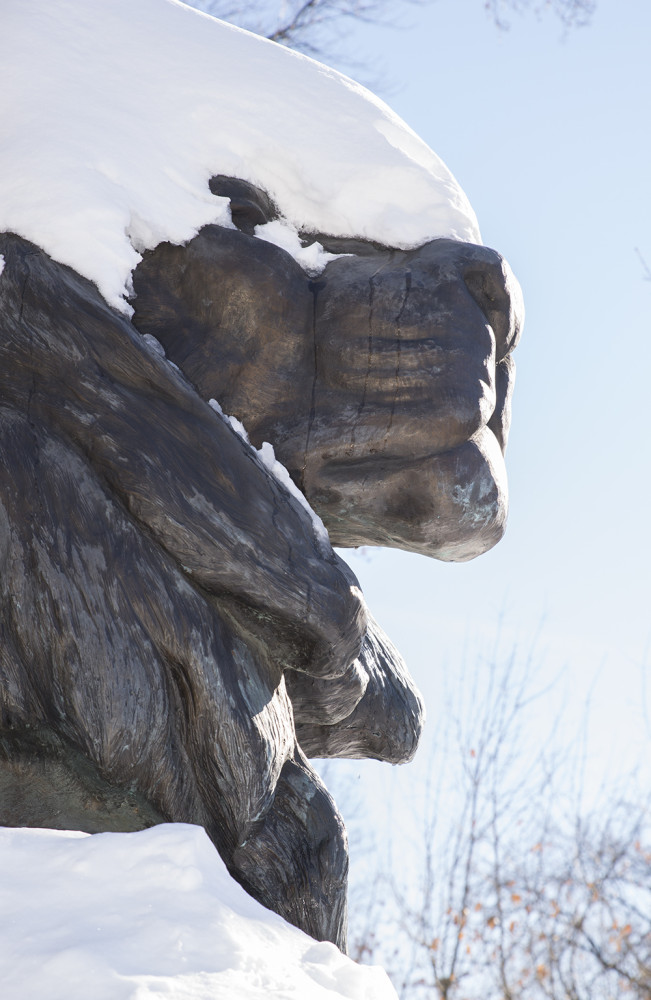
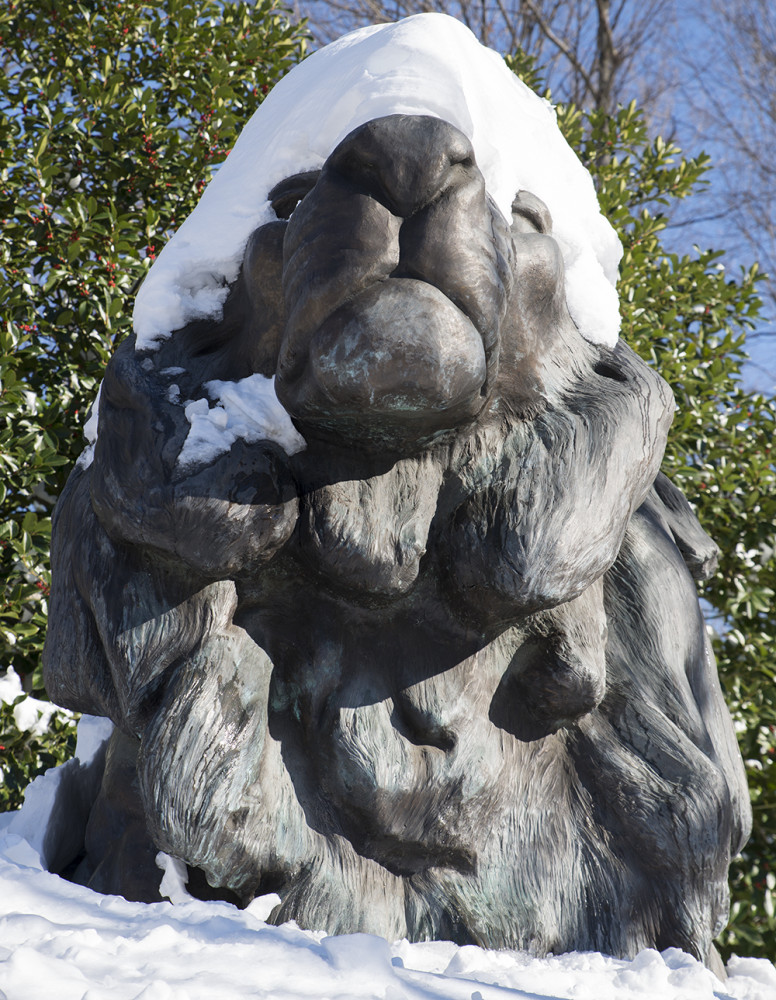
Piney Branch Bridge
16th Street
These are tigers, let’s be clear about that. But they were created by one of the most renown U.S. animal sculptors—Alexander Phimister Proctor—who studied tigers in the Bronx Zoo for the contract in 1909 (he lived in New York). The bridge where these tigers reside is pretty special: it’s the first built in the U.S. using a parabolic arch and the longest in the world when it was completed in 1910. (Source and source)
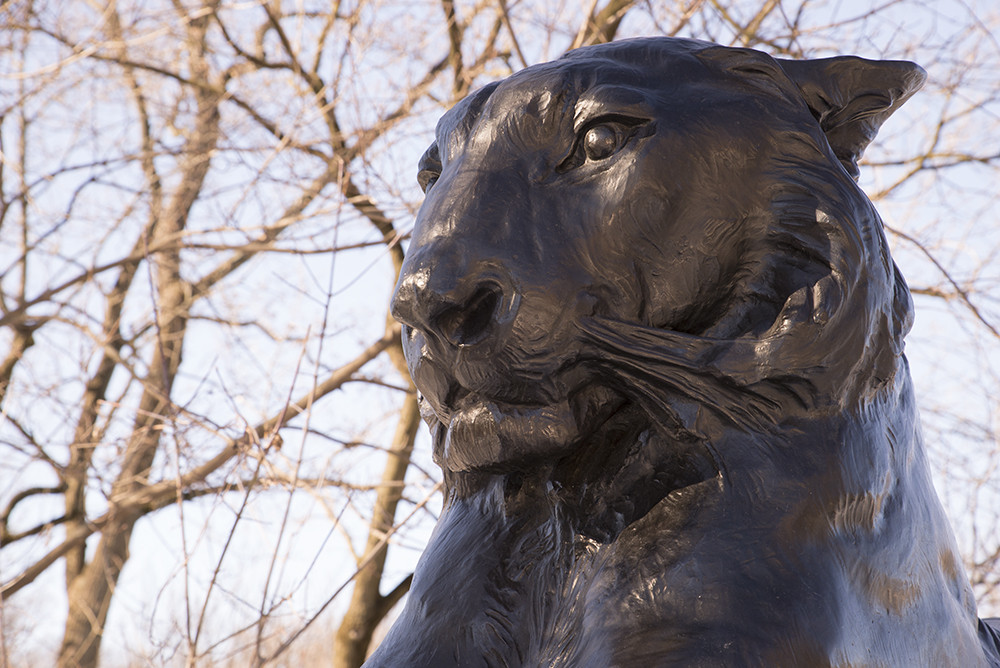
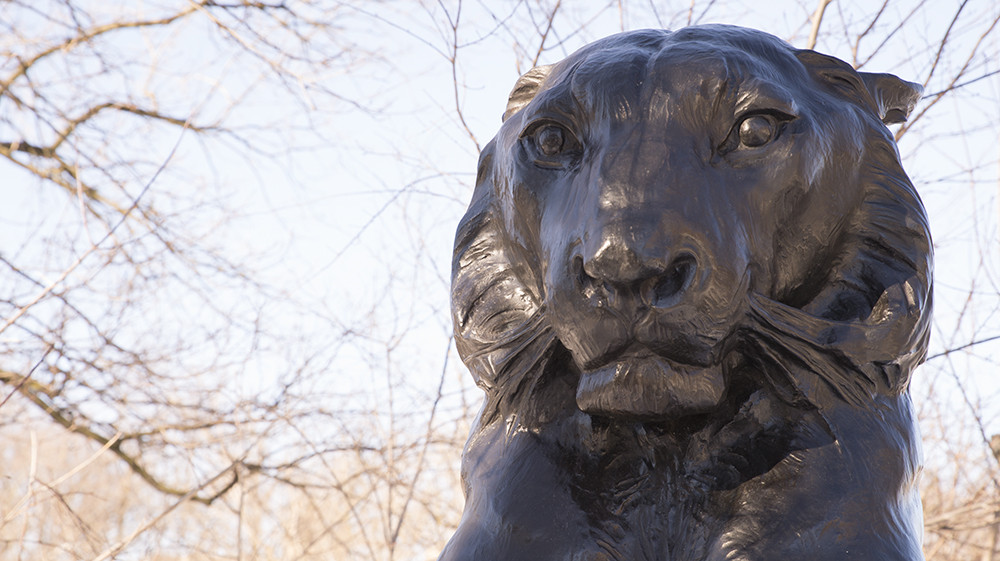
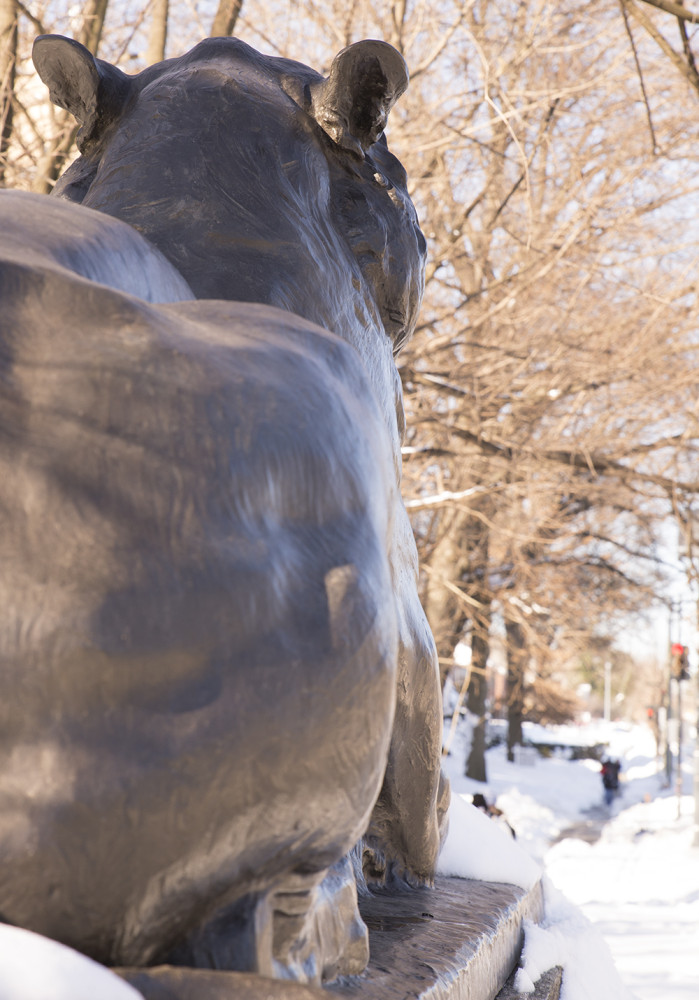
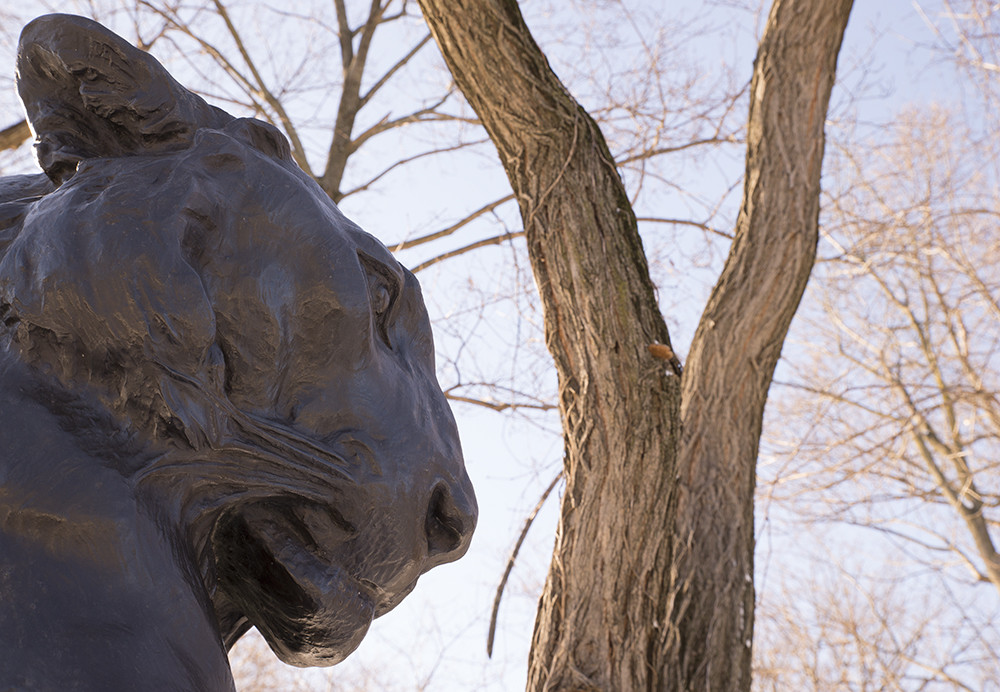
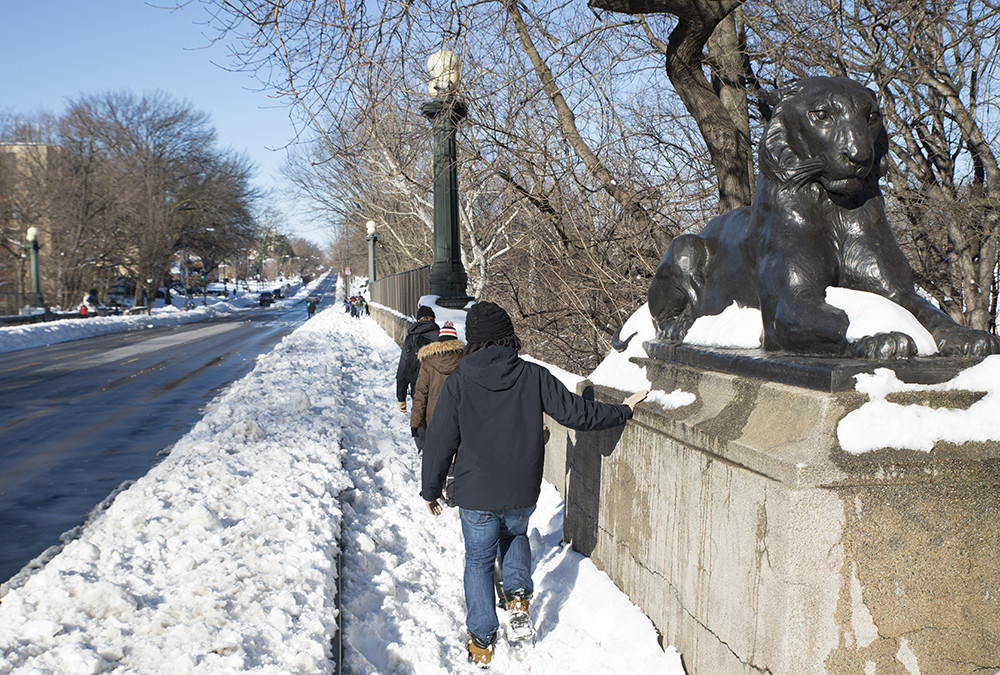
Canova Lions
Corcoran Gallery of Art
Installed in 1860, these are the oldest lions I could find in D.C. and, being just across the street from the White House, they are easy to add to any tourist itinerary. They are technically copies, though—the originals are located at St. Peters in Rome (sculpted in marble by Antonio Canova in 1792). (Source)
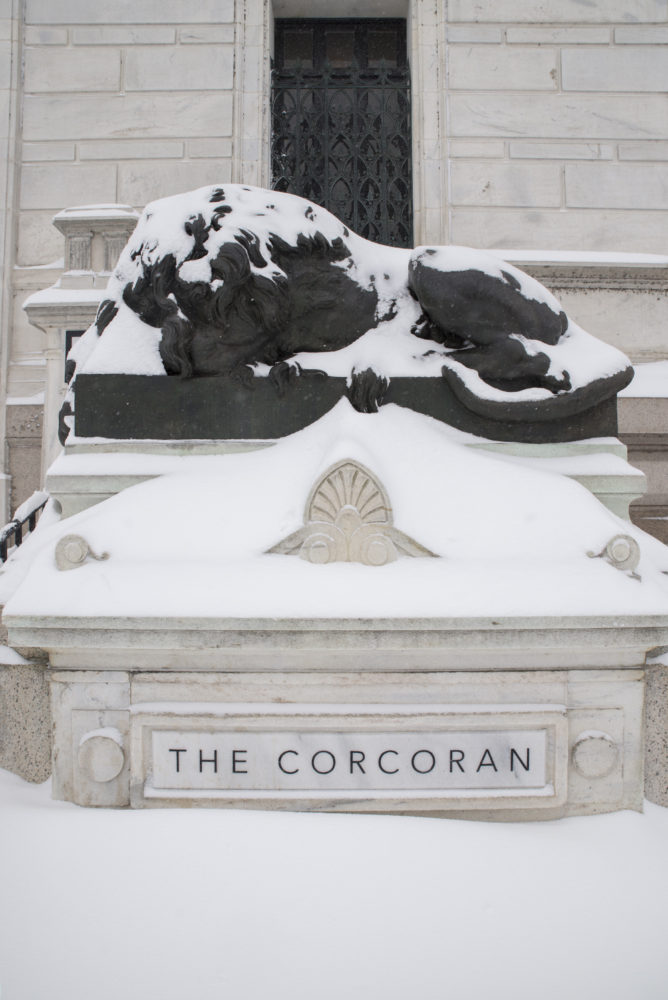
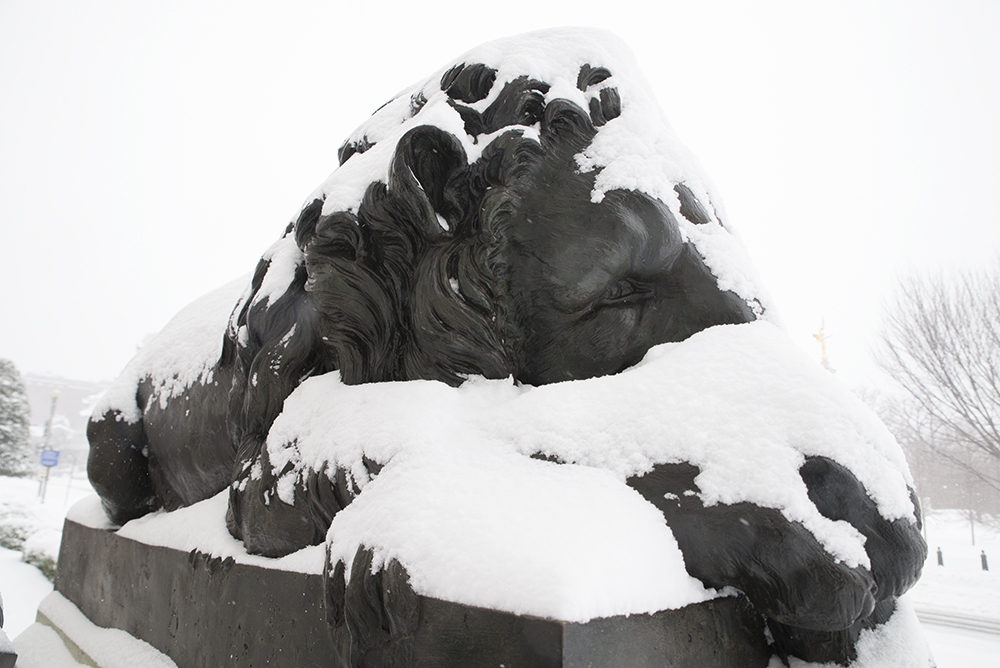
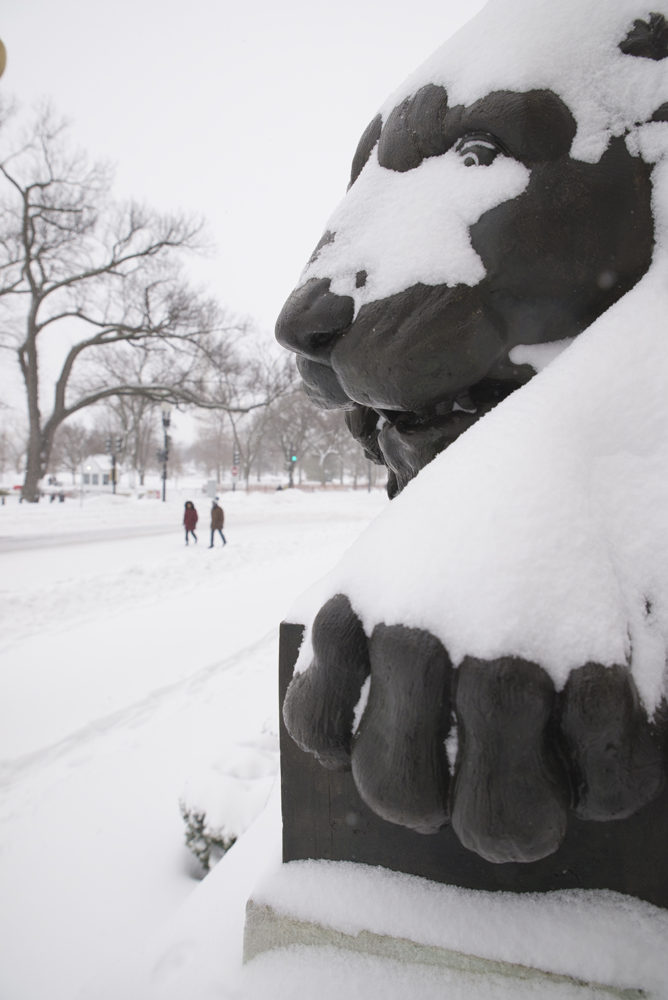
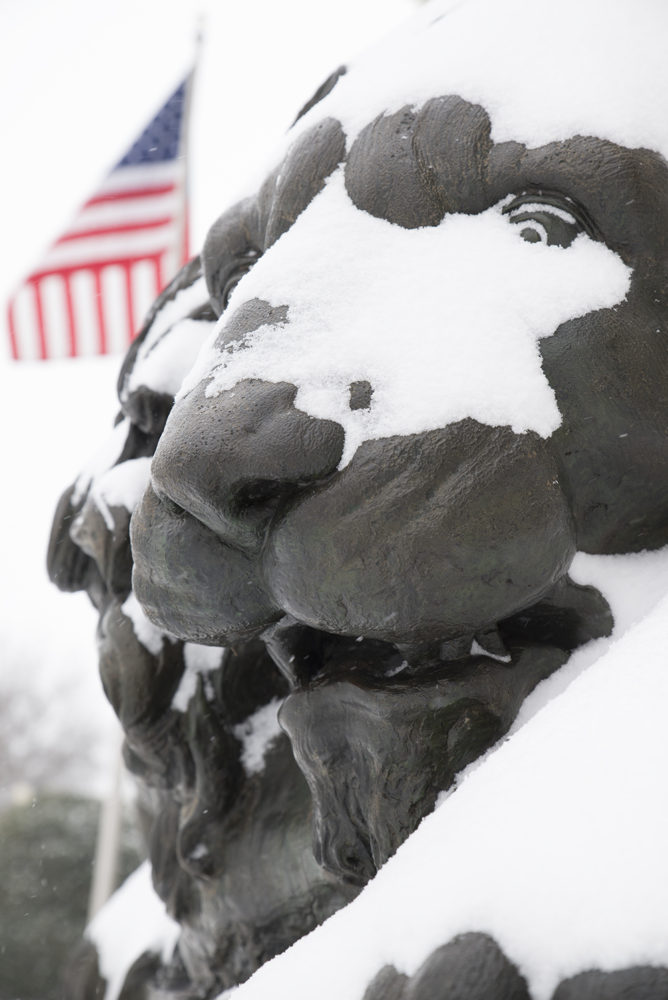
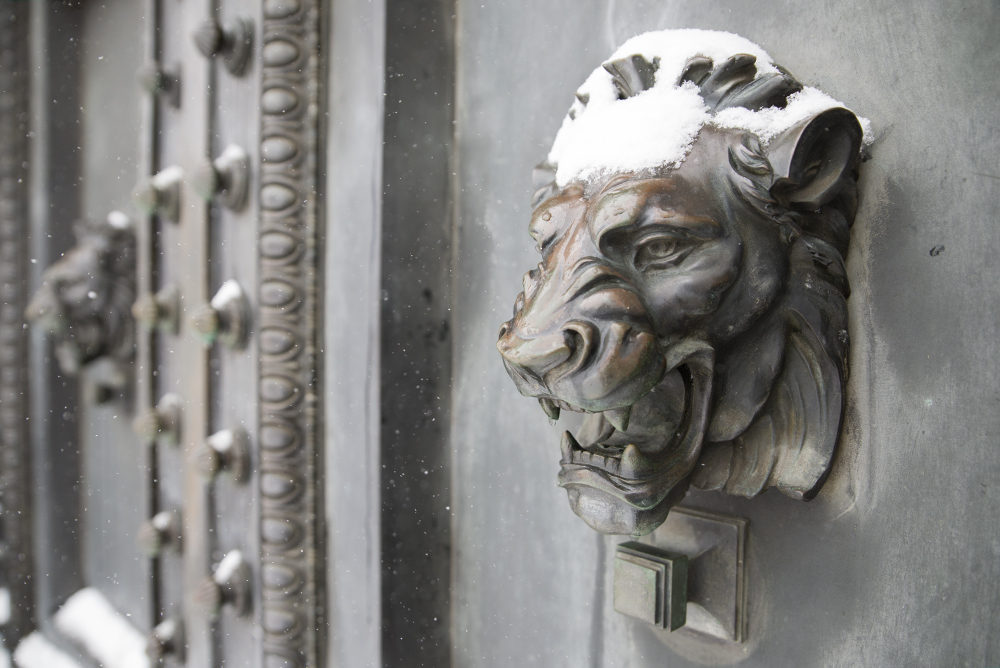
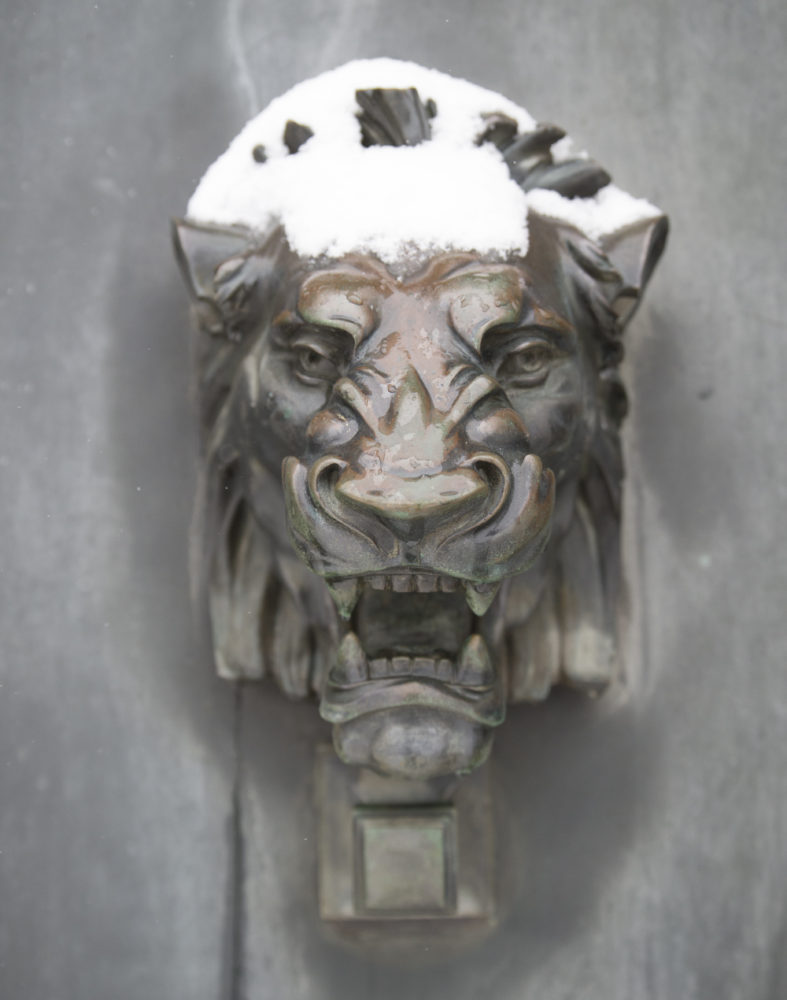
Capital Grille Lions
There are over fifty locations for the Capital Grille, the first of which was opened in Rhode Island in 1990. So these lions aren’t old or unique, but they are in D.C. (Plus the National Gallery of Art is right across the street). (Source)
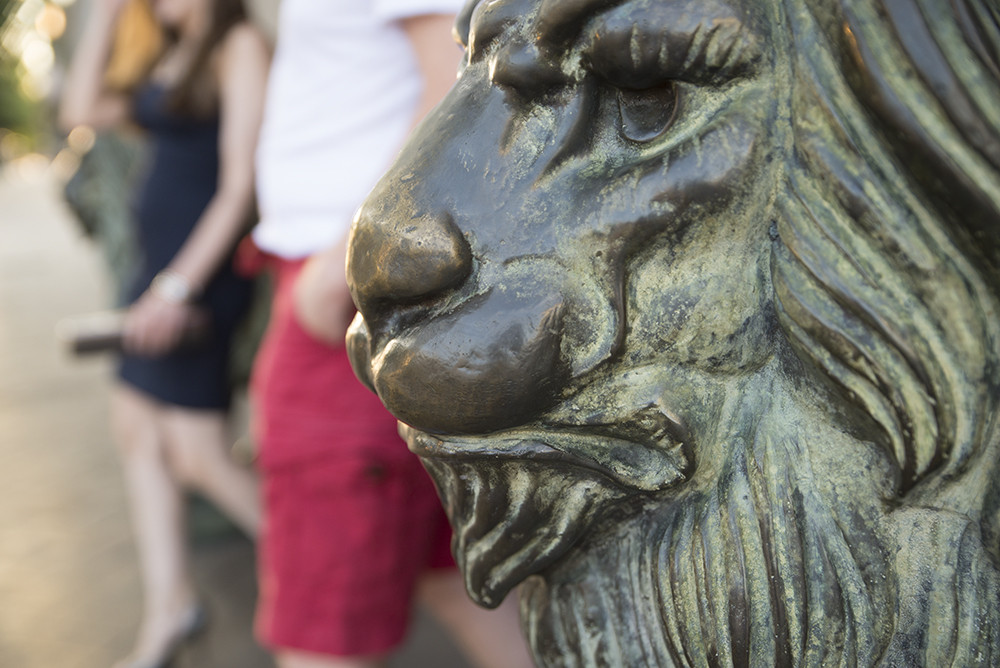
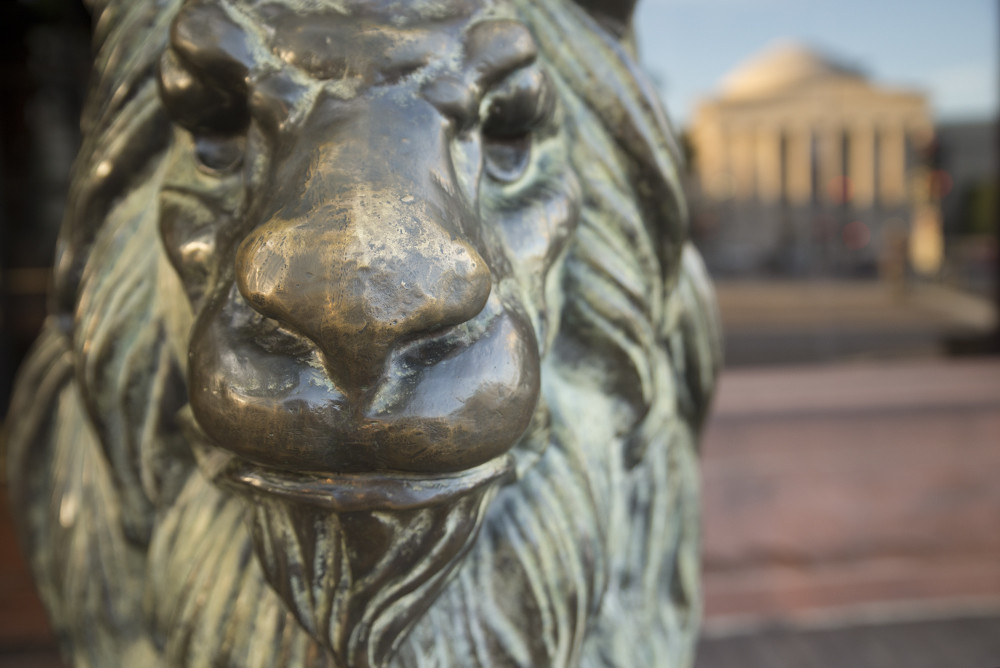
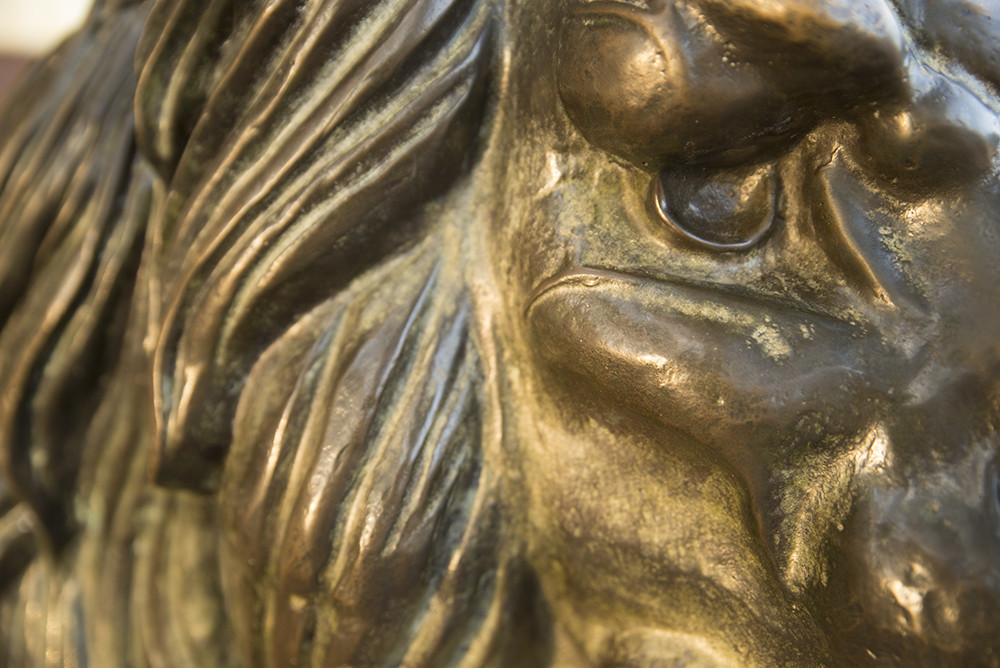
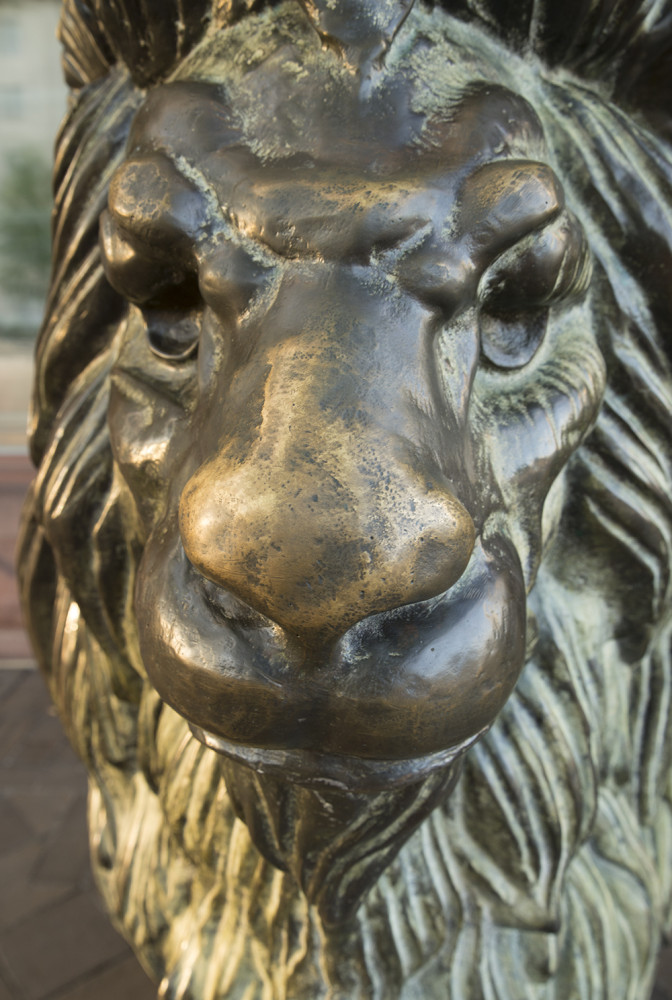
National Law Enforcement Memorial
When completed in 1991, this memorial displayed the names of over 12,000 U.S. law enforcement officers who had fallen in the line of duty (the number has since surpassed 20,000). New names are commemorated every year during Police Week in mid-May. The lionesses were sculpted by Raymond Caskey; the playful cubs, by George Carr. (Source)
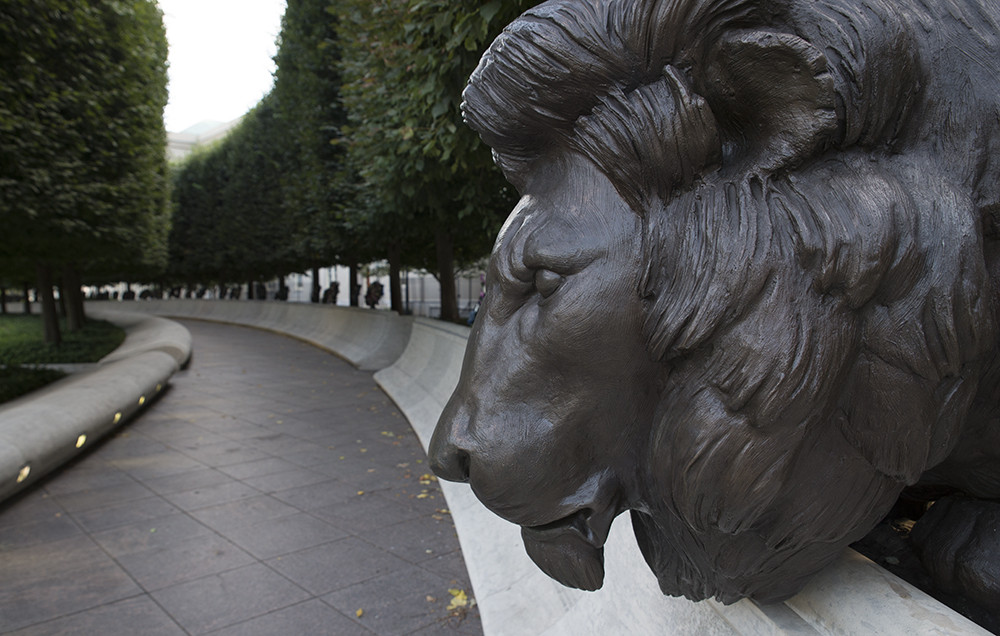
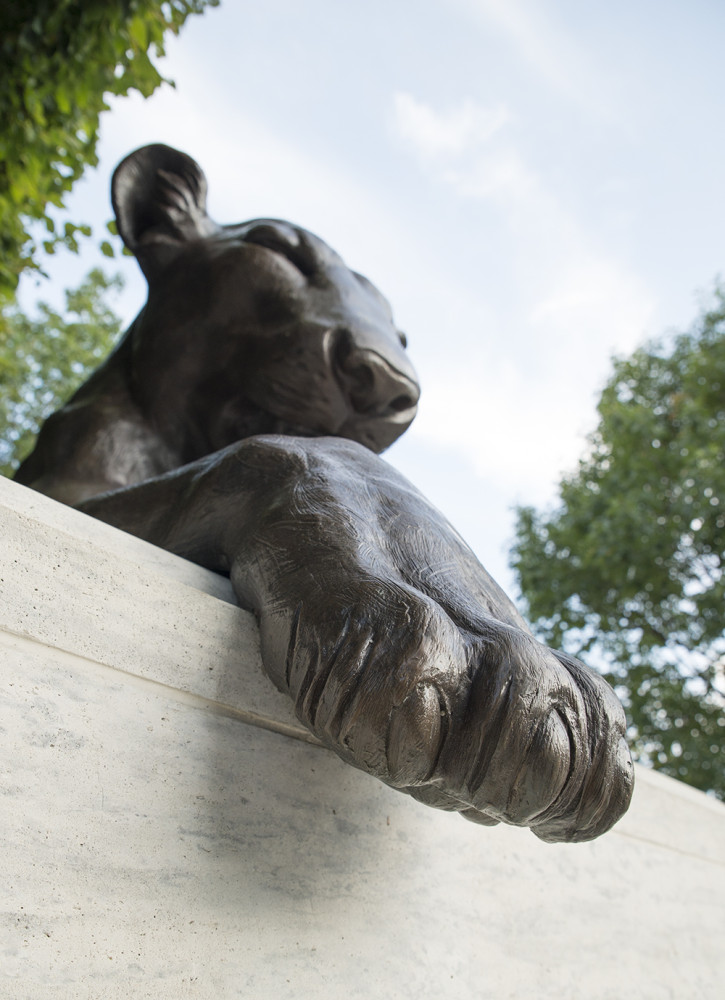
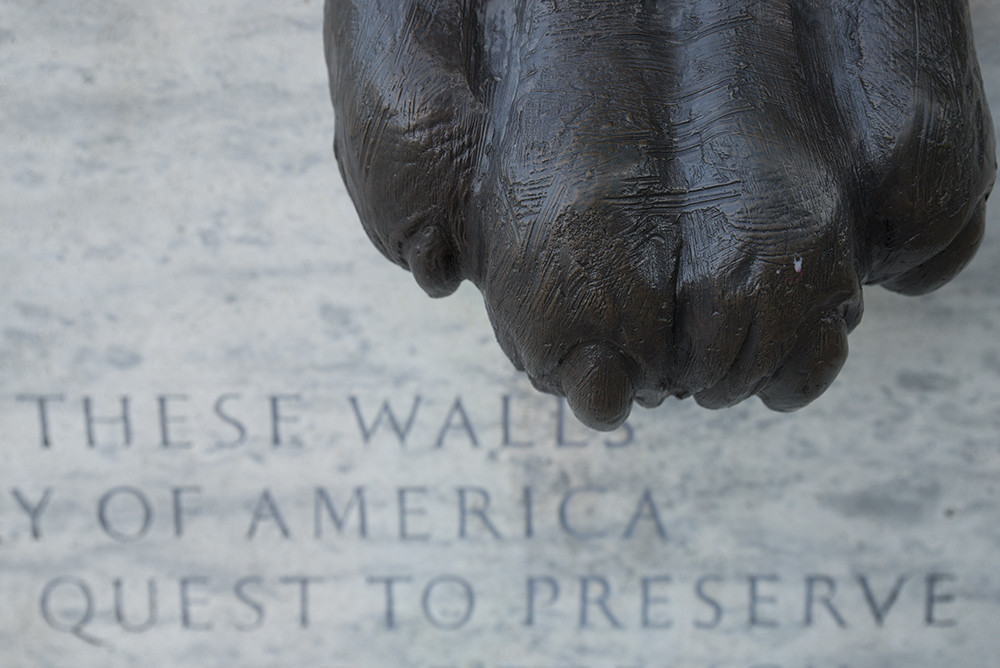
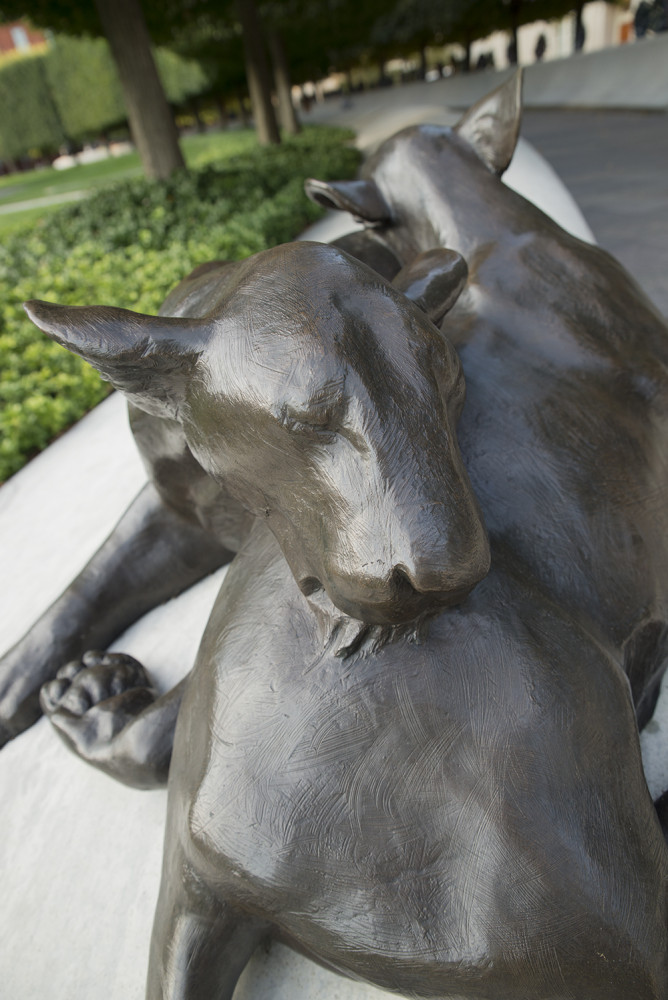
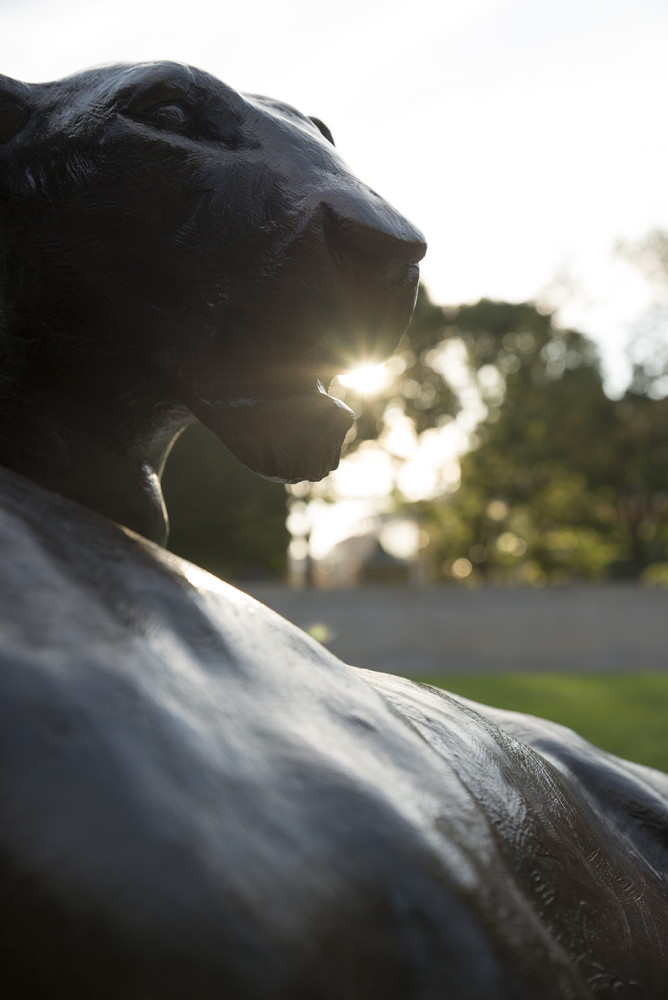
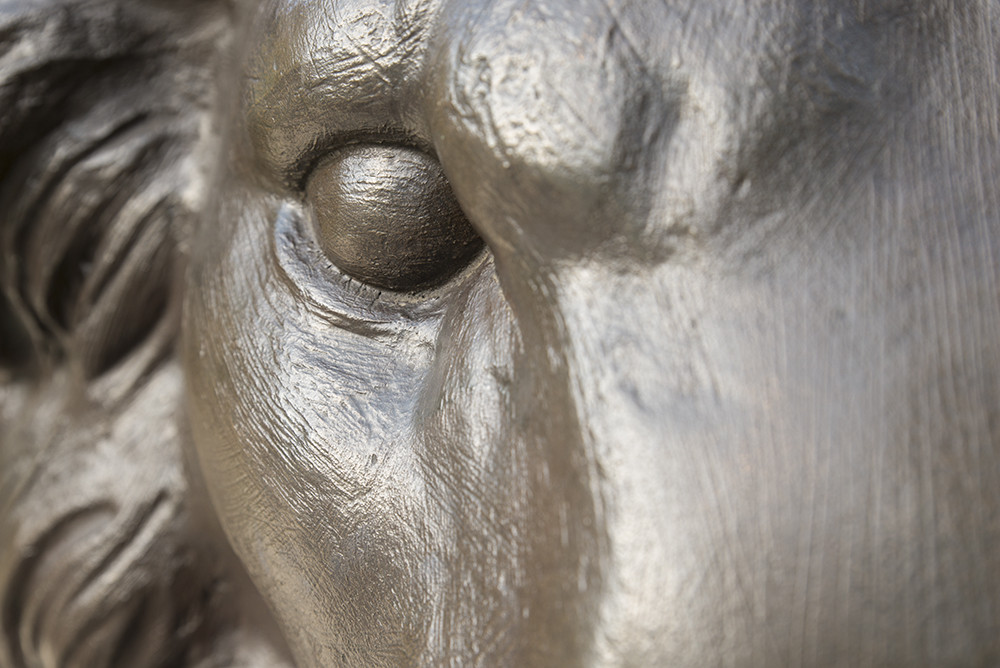
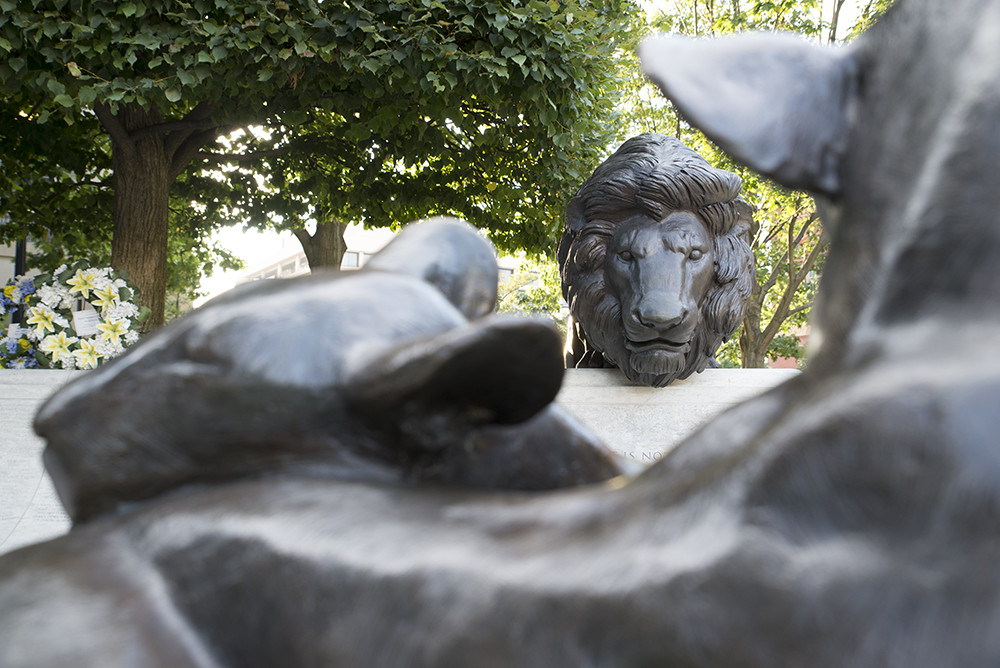
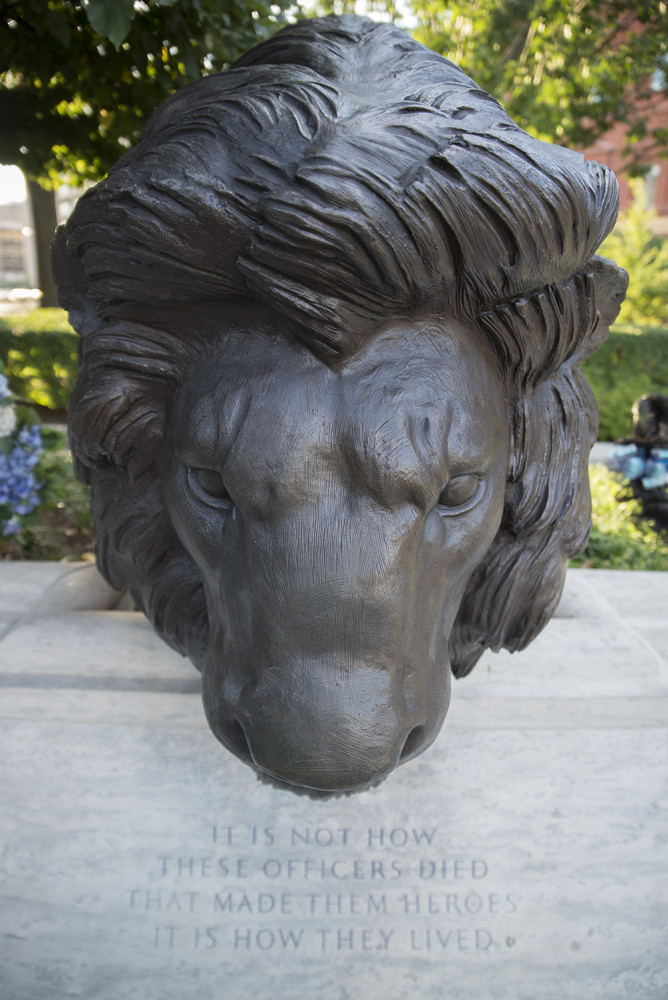
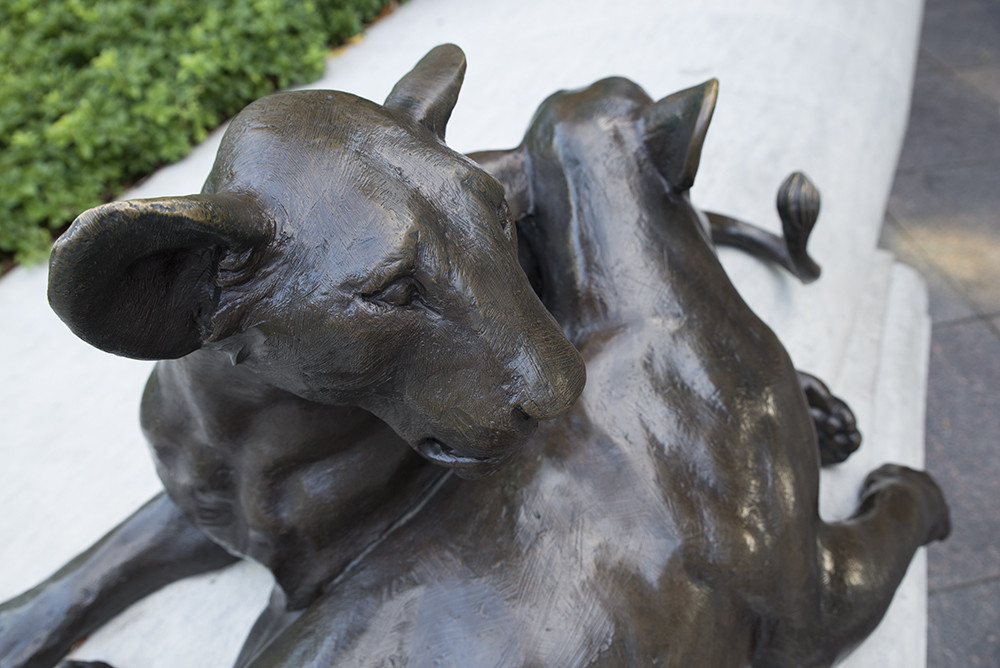
Netherlands Carillon
Across the river in neighboring Virginia and directly adjacent to Arlington National Cemetery, the “Netherlands Carillon” boast some of the more unique lions in the D.C. area. Sculpted by Dutch artist Paul Koning, these stately lions perch on top a modest slope looking east across the Potomac River towards the National Mall. Their backdrop is one of the most anachronous protrusions in the D.C. skyline—a 130-foot-tall tower that holds 50 bells gifted to the U.S. by The Netherlands after World War II (49 actually; a 50th bell was added in 1995). (Source)
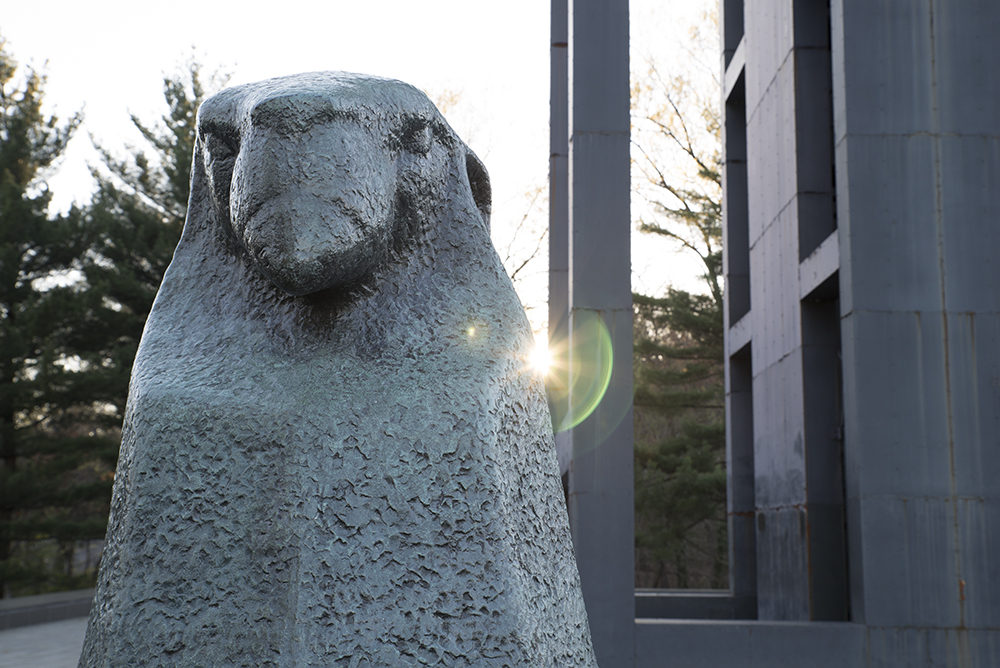
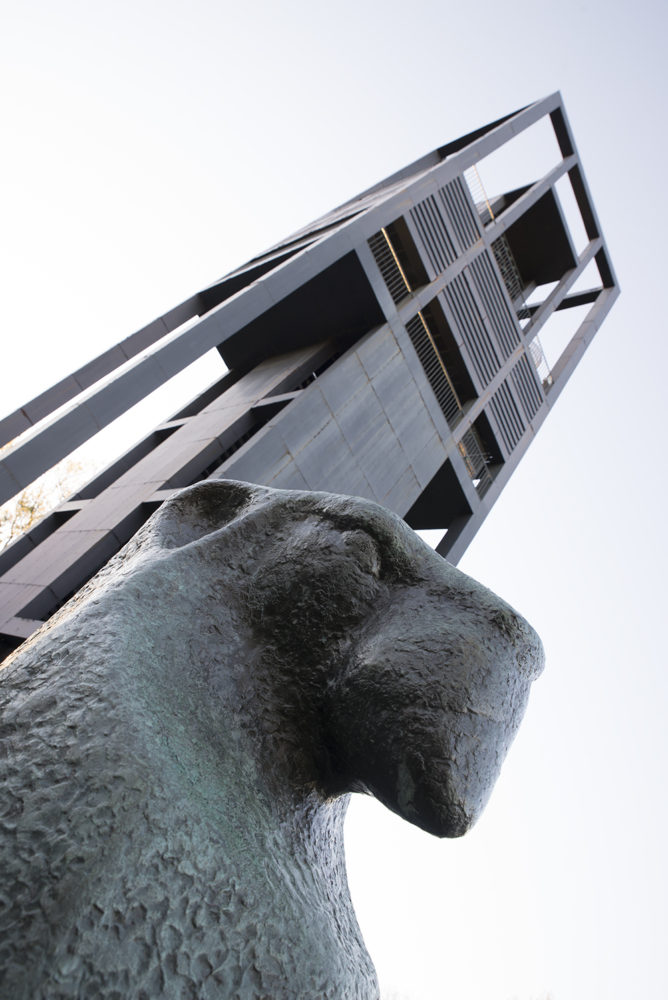

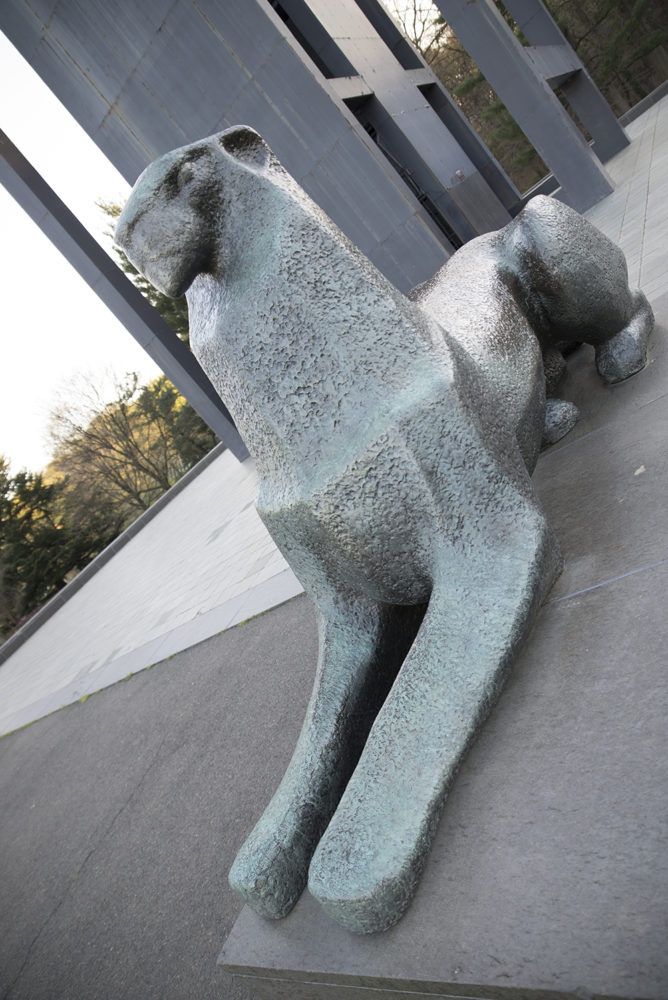
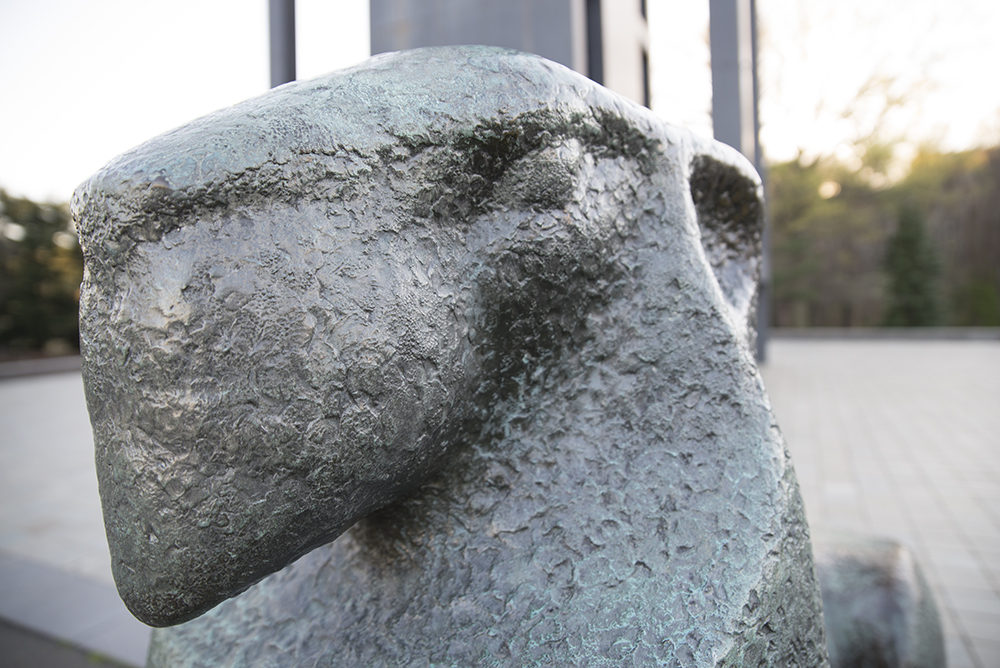
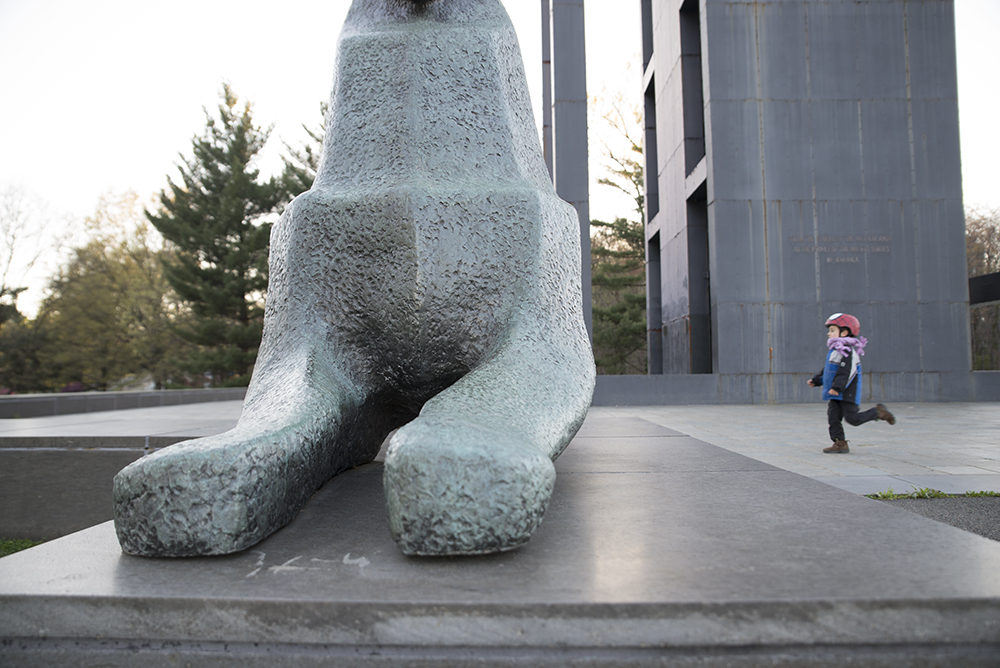
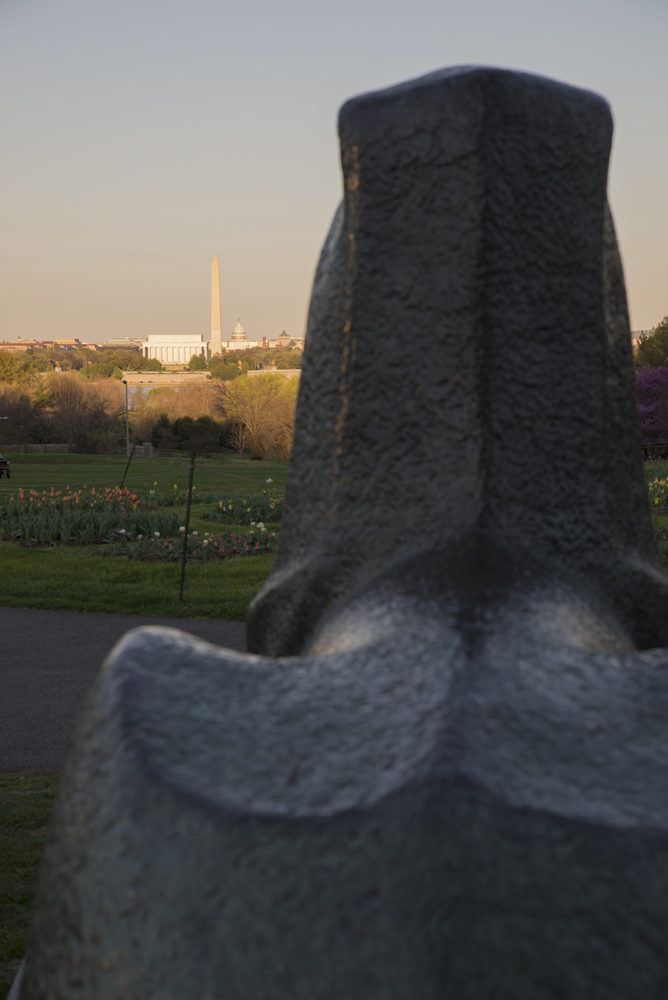
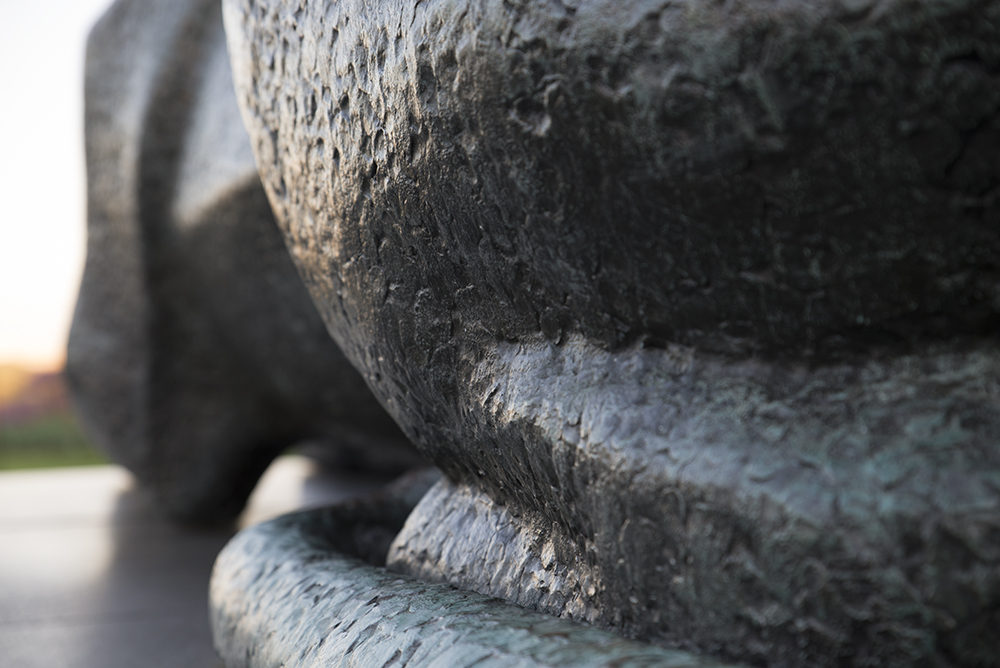
United House of Prayer for All People
The United House of Prayer for All People is widespread – over 100 places of worship in more than twenty states – and has several churches in D.C., including its headquarters at 6th and M near the Mt. Vernon metro. A pair of cement lions, with faded white paint and three eyes between the two of them, flank the building next door. Another set of lions can be found at a second church located on H Street; a third further north in Shaw. The church is famous for using fire hoses during mass baptisms and hosting a vibrant marching band parade on Memorial Day. (Source and source)
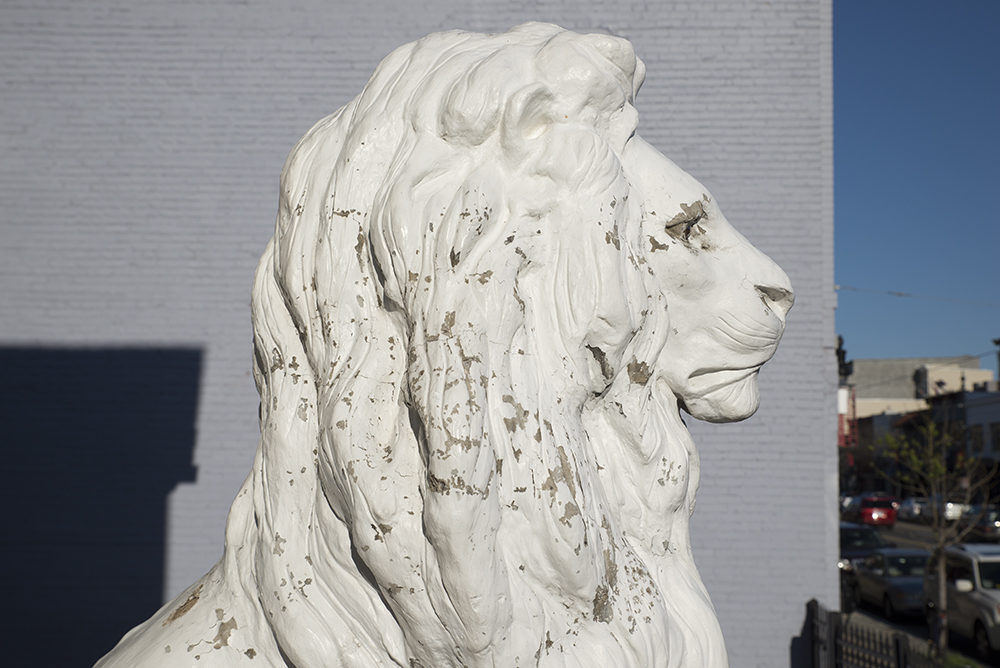
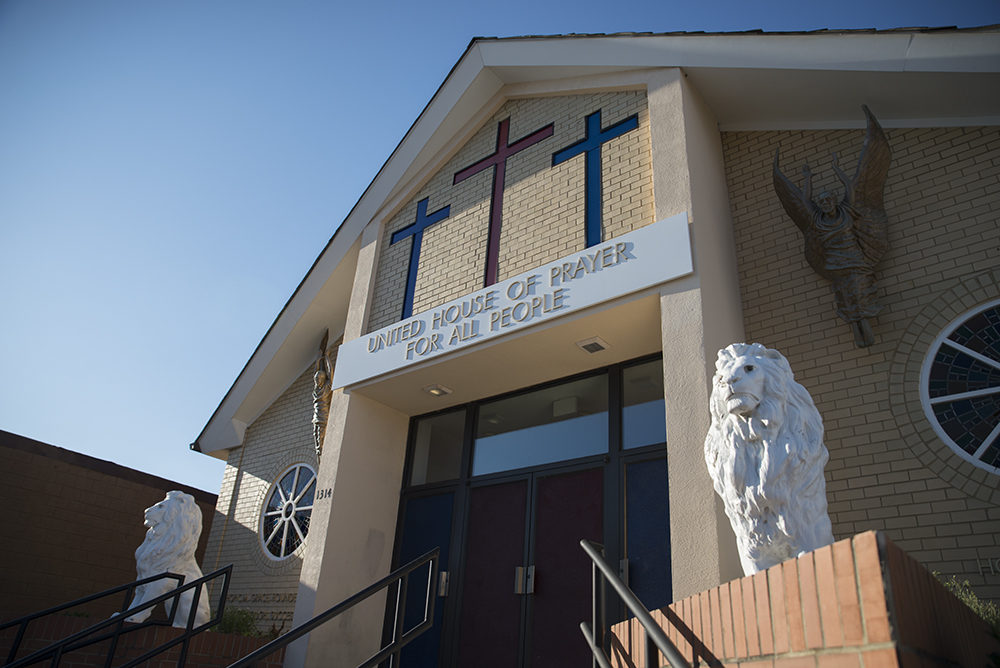
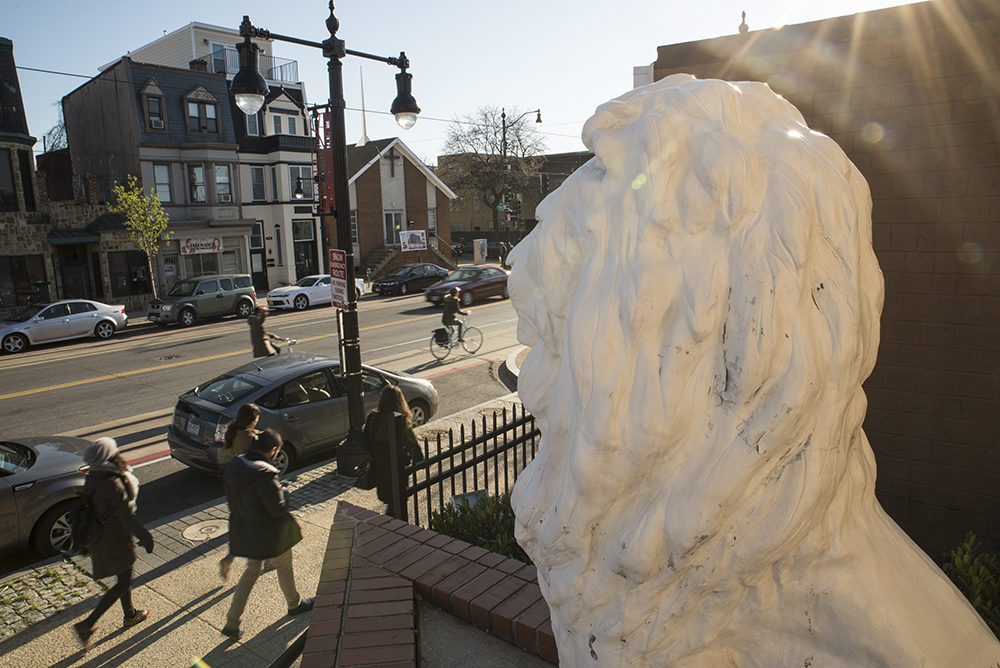
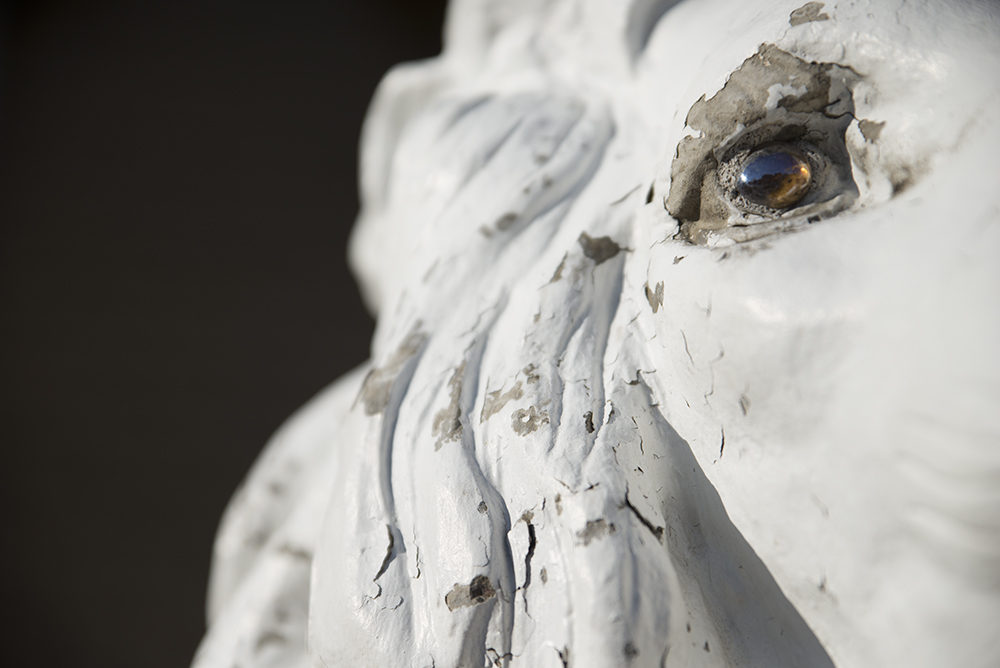
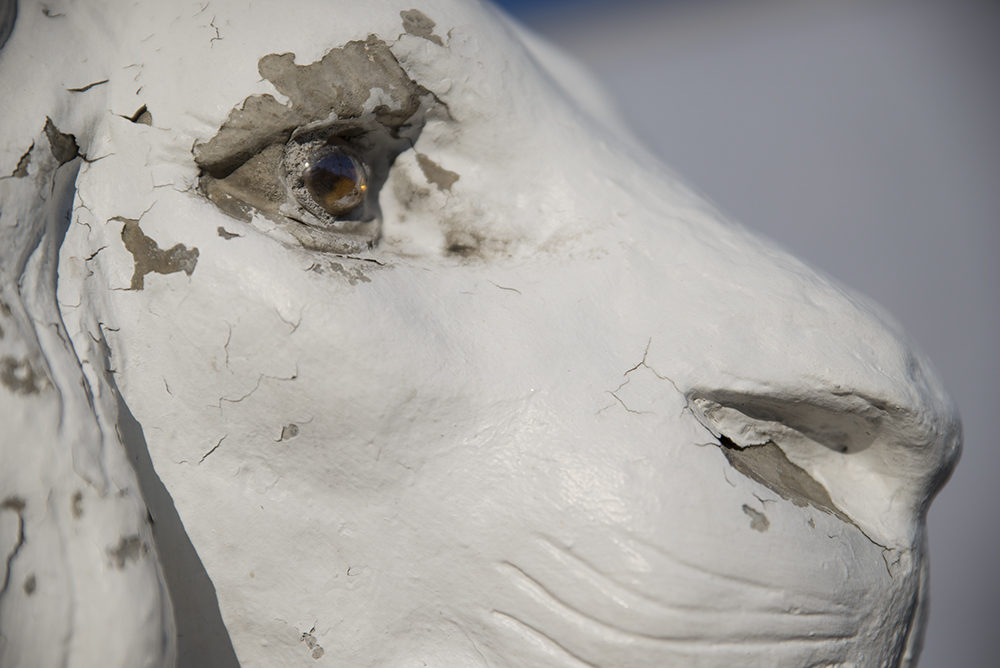
Ulysses S. Grant Memorial
This memorial – the largest equestrian monument in the United States – was completed in 1920 to commemorate the Union army general and two-term President (1869-1877). After being petitioned by veterans who served under Grant, Congress approved no more than $250,000 for the project, at that time the largest federal expenditure for a sculpture. It was stipulated that the contract must be awarded to an American artist and completed entirely on American soil. It took nearly two decades for the largely self-taught Henry Merwin Shrady to complete his bronze vision, which included two pairs of stoic lions; he unfortunately died tragically two weeks before the sculpture’s dedication.
His back to the Capitol Building, Grant looks west down the entire stretch of the National Mall. It has been under restoration since Spring 2015. (Source)
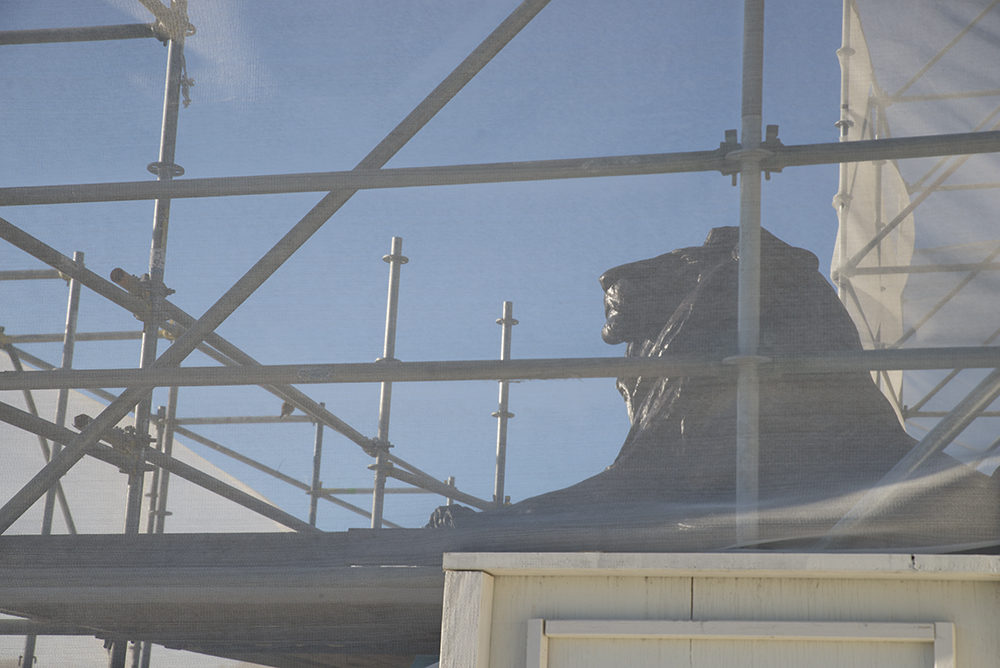
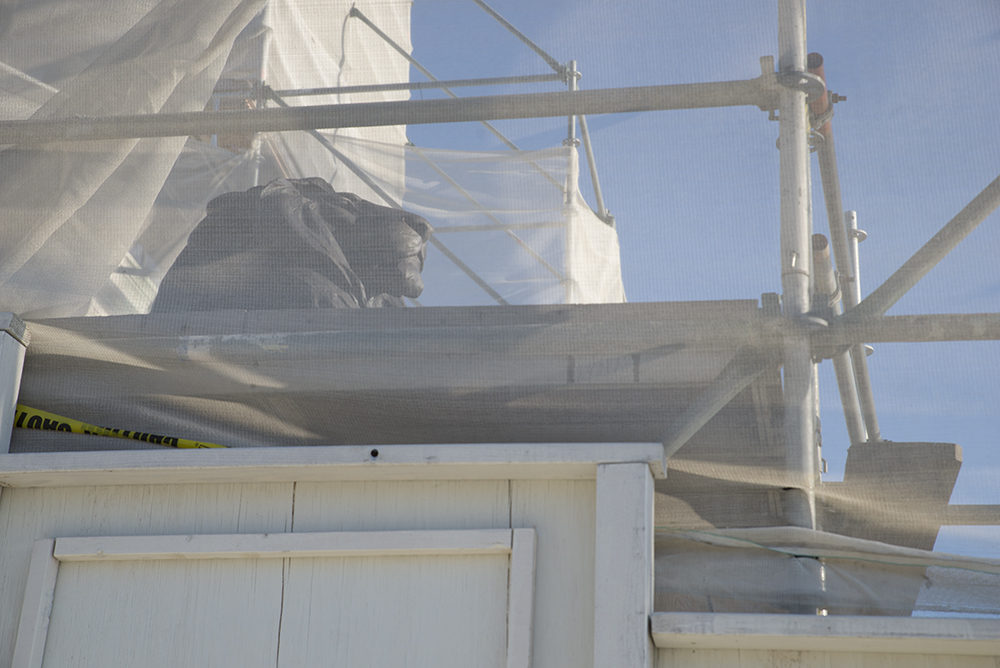
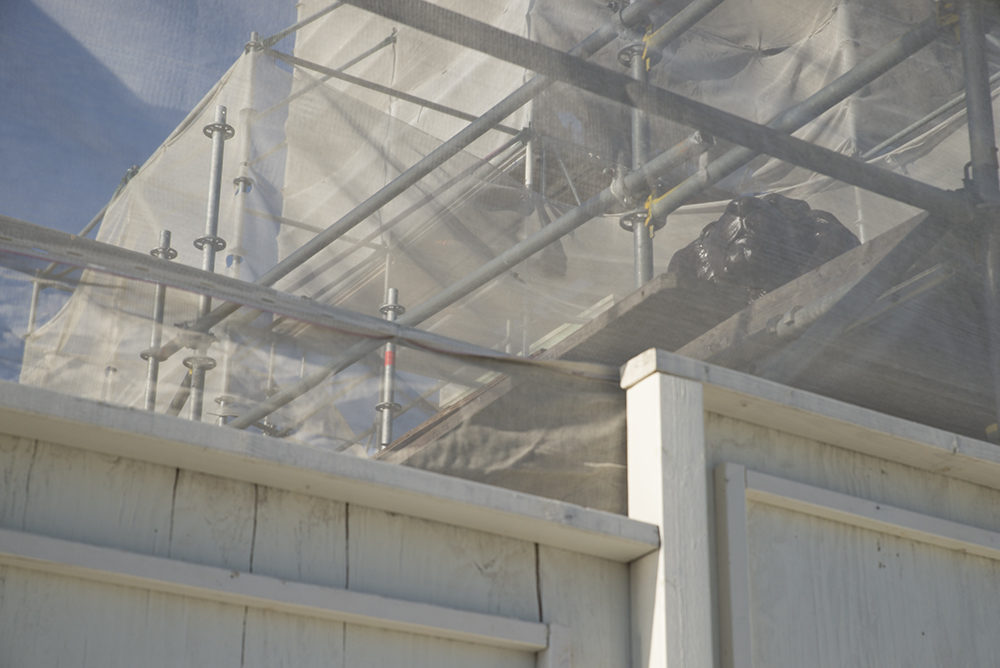
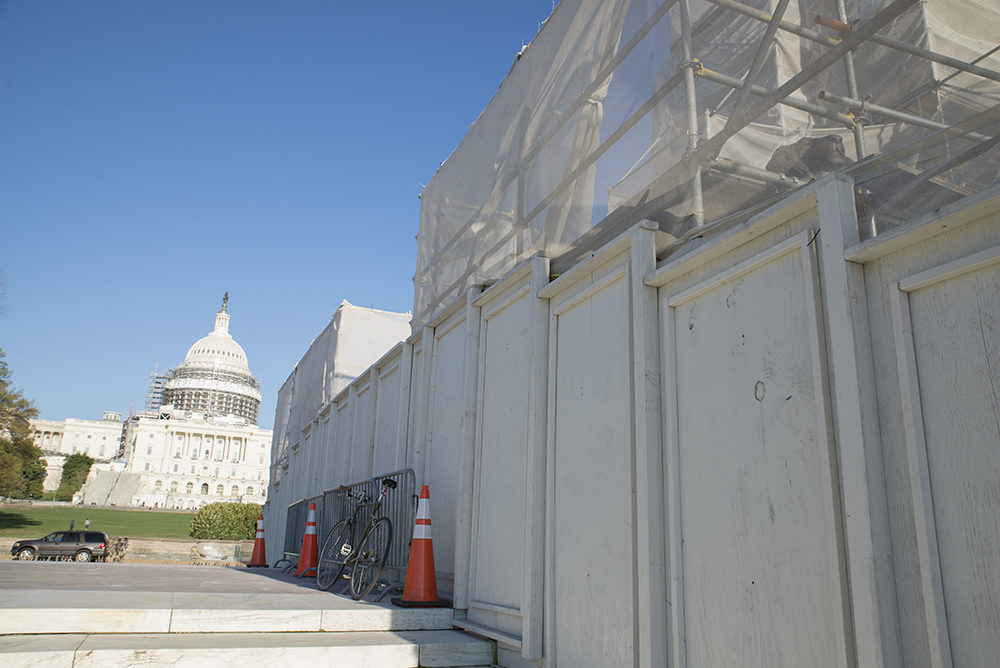
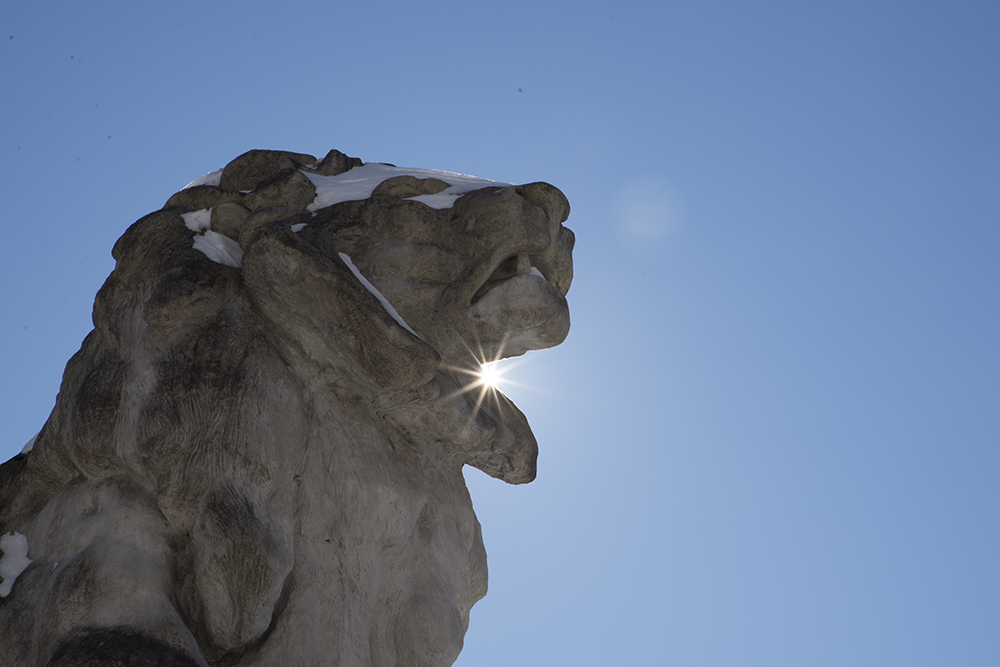
I’ve been thinking of the Lions in WDC for many years, thinking that someday I’d like to take photos of them all. How wonderful to know that there are others who love these magnificent animals! Thank you for your photos and the sources.